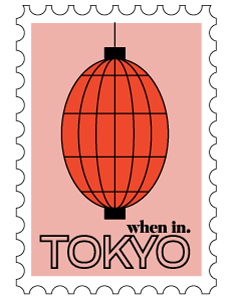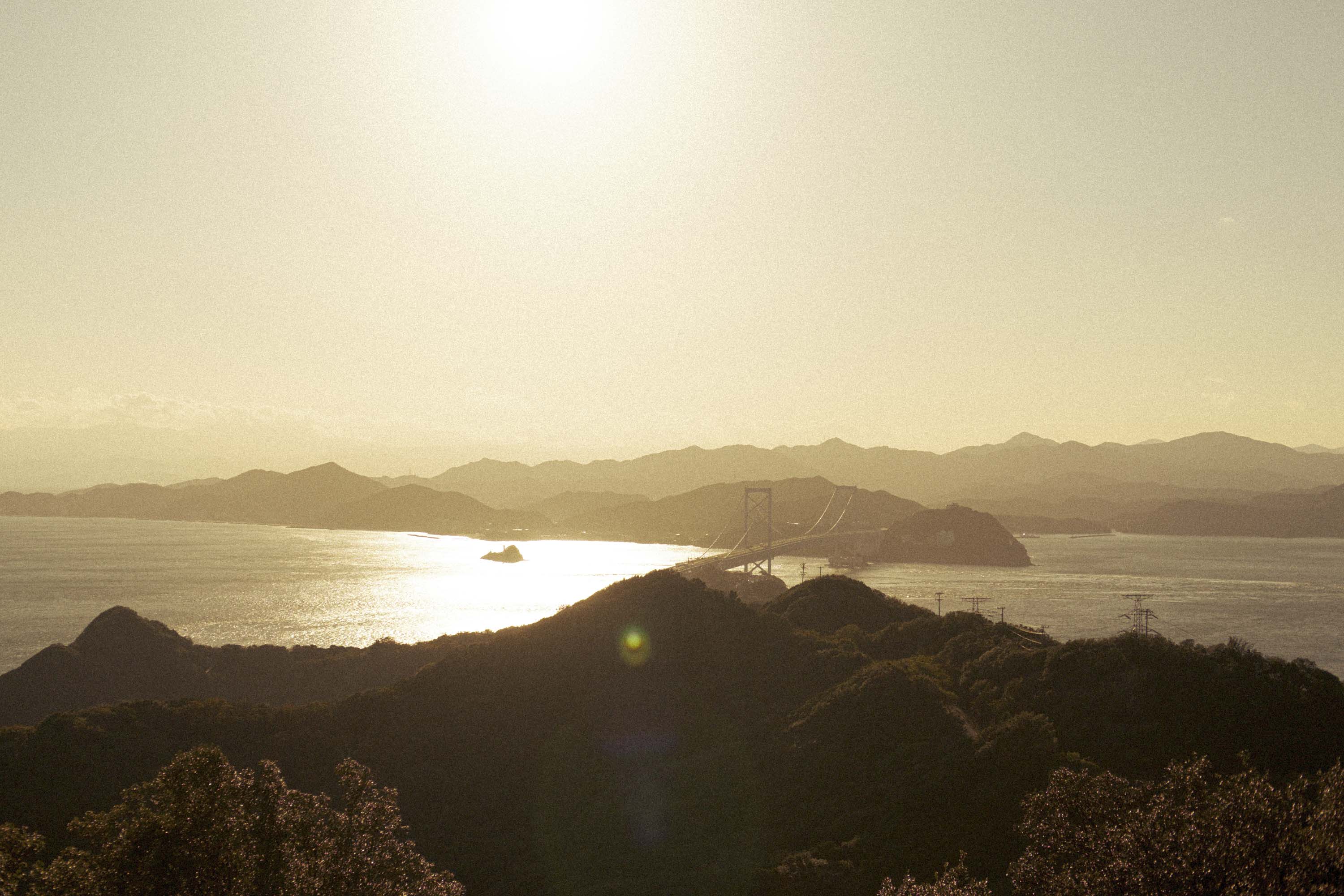

Nestled in the eastern part of the Seto Inland Sea, Awaji serves as a bridge between Japan’s largest main island, Honshu, and its smallest, Shikoku. A 40-minute drive from Kobe takes you across the breathtaking Akashi-Kaikyo Bridge, the world’s longest suspension bridge at its completion in 1998. From the north side of Awaji, you can spend a day exploring the island’s most beautiful architectural sites before ending your tour again in Kobe, or, continue on towards Tokushima and then Naoshima.
Access:
The easiest way to access Awaji is from the north via Shinkansen first to Shin-Kobe station, and then via rental car. If you’re coming from Naoshima or Tokushima, you can also make your way across the island from the south and then finish at Shin-Kobe station. From Kobe it’s about a 40-minute drive to the north side of the island and then another hour to reach the architecture spots furthest to the south.
Honpukuji Water Temple | Tadao Ando
︎ 1991︎ 09:00-17:00
︎Google Maps
Start your morning at the legendary Honpukuji Water Temple, designed by none other than master architect Tadao Ando. A short flight of stairs takes you past an unassuming temple to a sleek, minimalist concrete entrance, a hallmark of Ando’s signature style.
As you pass around the corner, you will reach the temple’s famous oval water pond (Mizumido) with floating waterlilies and lotus blossoms that are at their most beautiful during the late spring and summer months.
Descend down below into the main hall of the temple, a circular space surrounded by striking vermilion-painted wooden walls and lattice screens that divide the outer and inner sanctuaries. Inspired by the Jododo Hall of Jodoji Temple from the Kamakura period, Tadao Ando designed a light court behind the inner sanctuary, allowing sunlight to reflect off the walls and fill the space with a warm vermilion glow if you plan your visit in the late afternoon.
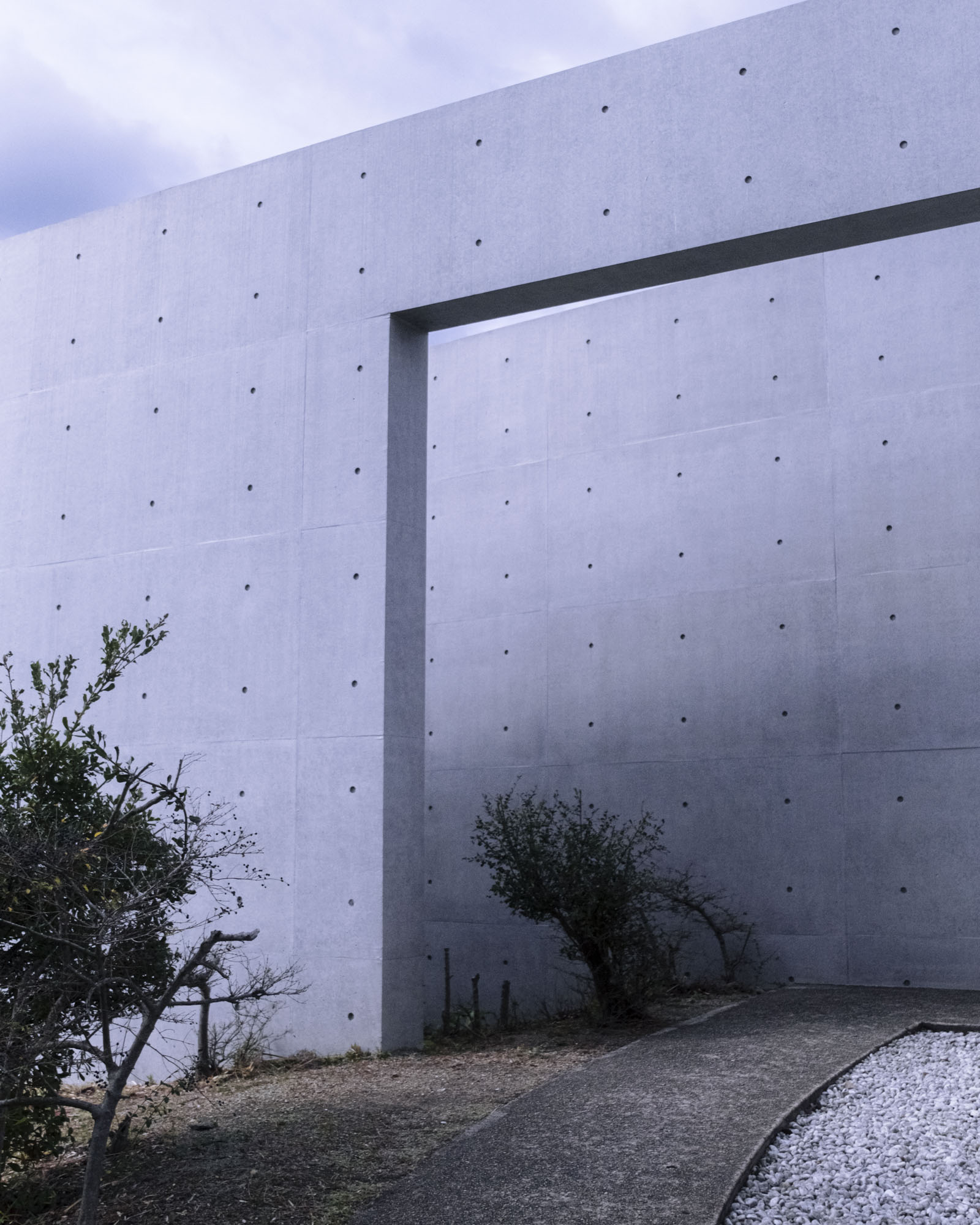

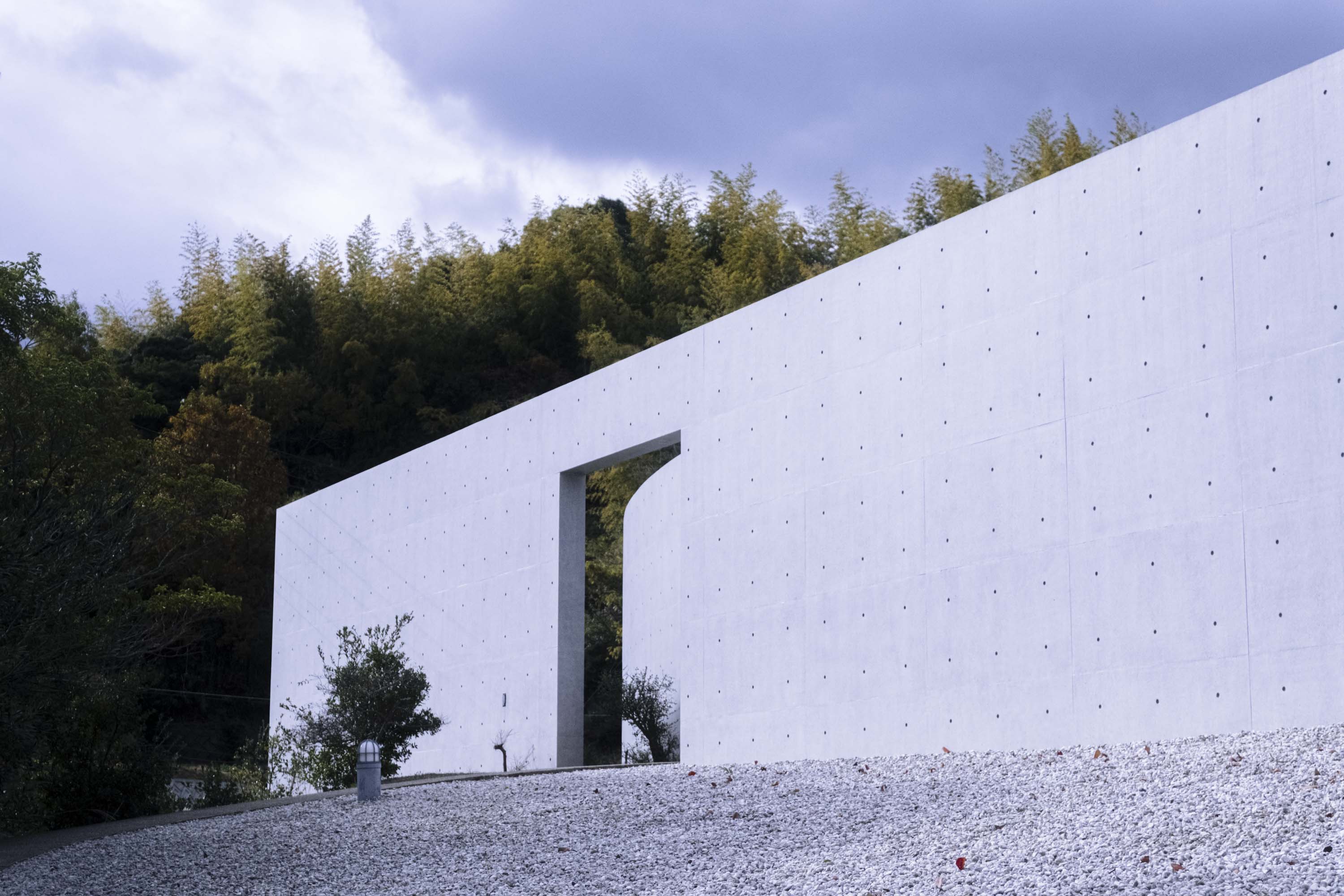

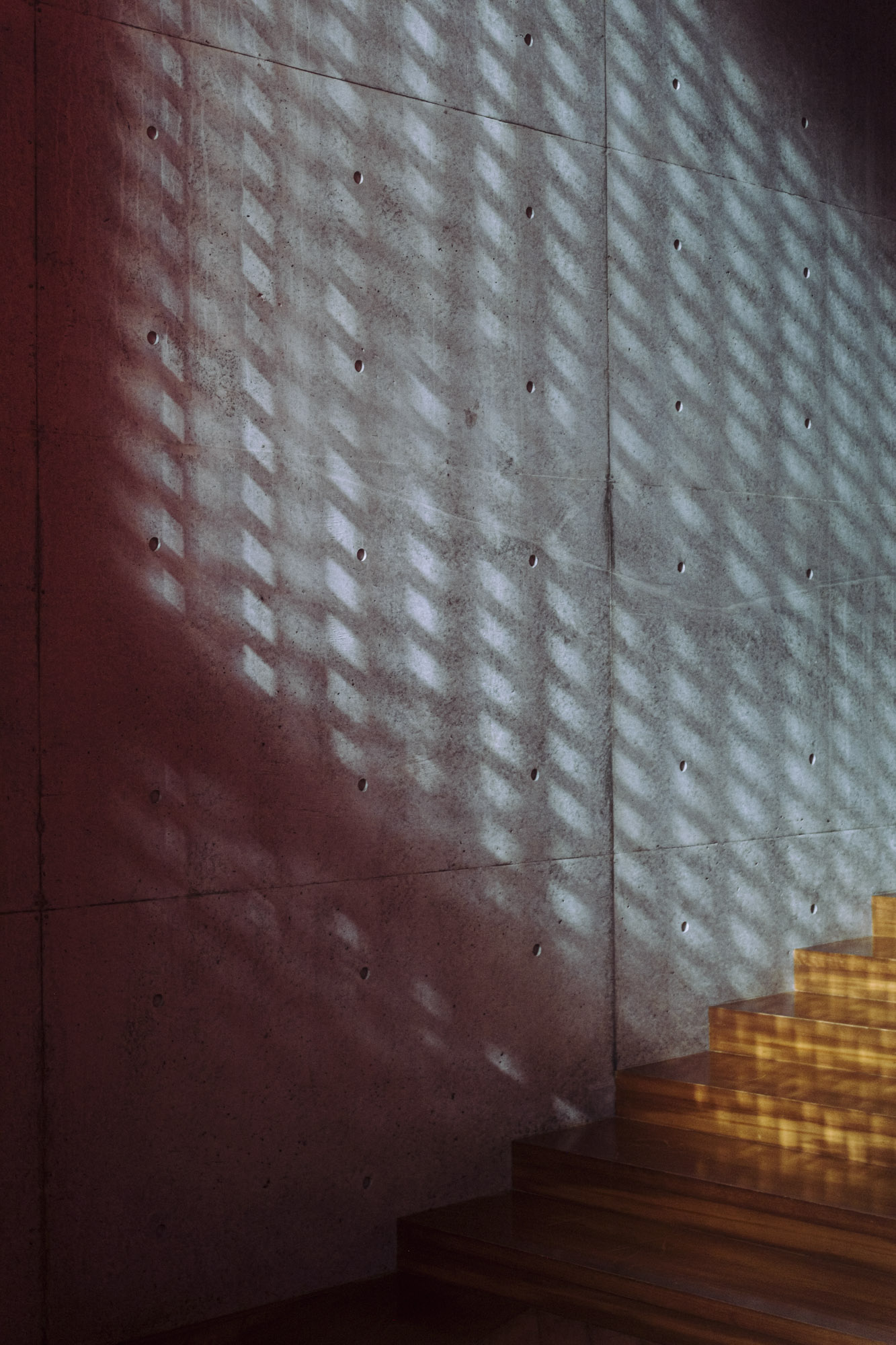

Yumebutai | Tadao Ando
︎2000︎ 09:00-17:00
︎Google Maps
After visiting Honpukuji, take a short drive to the nearby Yumebutai, another stunning creation by the legendary Tadao Ando. Set on a hillside overlooking Osaka Bay, this sprawling complex, designed as an international conference and entertainment center, offers a great opportunity for a leisurely stroll through Ando’s timeless architectural spaces.
The highlight is the Hyakudan-en Garden or "100 Stepped Garden," an arrangement of small flower beds in a precise concrete grid that transforms with the seasons. For the best vantage point, take the elevator to the viewing platform. As you wander through the rest of the complex, explore winding pathways that lead to serene water features, open-air courtyards, and the signature elegance of Ando’s minimalist concrete design.
Zenbo Seinei | Shigeru Ban
︎ 2022︎Google Maps
Further west, you’ll find Zenbo Seinei, a luxurious meditation and yoga retreat designed by Pritzker Prize-winning architect Shigeru Ban. This elegant 90-meter-long, 7-meter-wide structure spans a tranquil valley, offering serene views of Awaji’s natural beauty.
Access is exclusive to guests booking an overnight stay or a day retreat, so unless you’re ready to splurge on the steep price tag, you’ll have to settle for admiring its serene design from the nearby road.
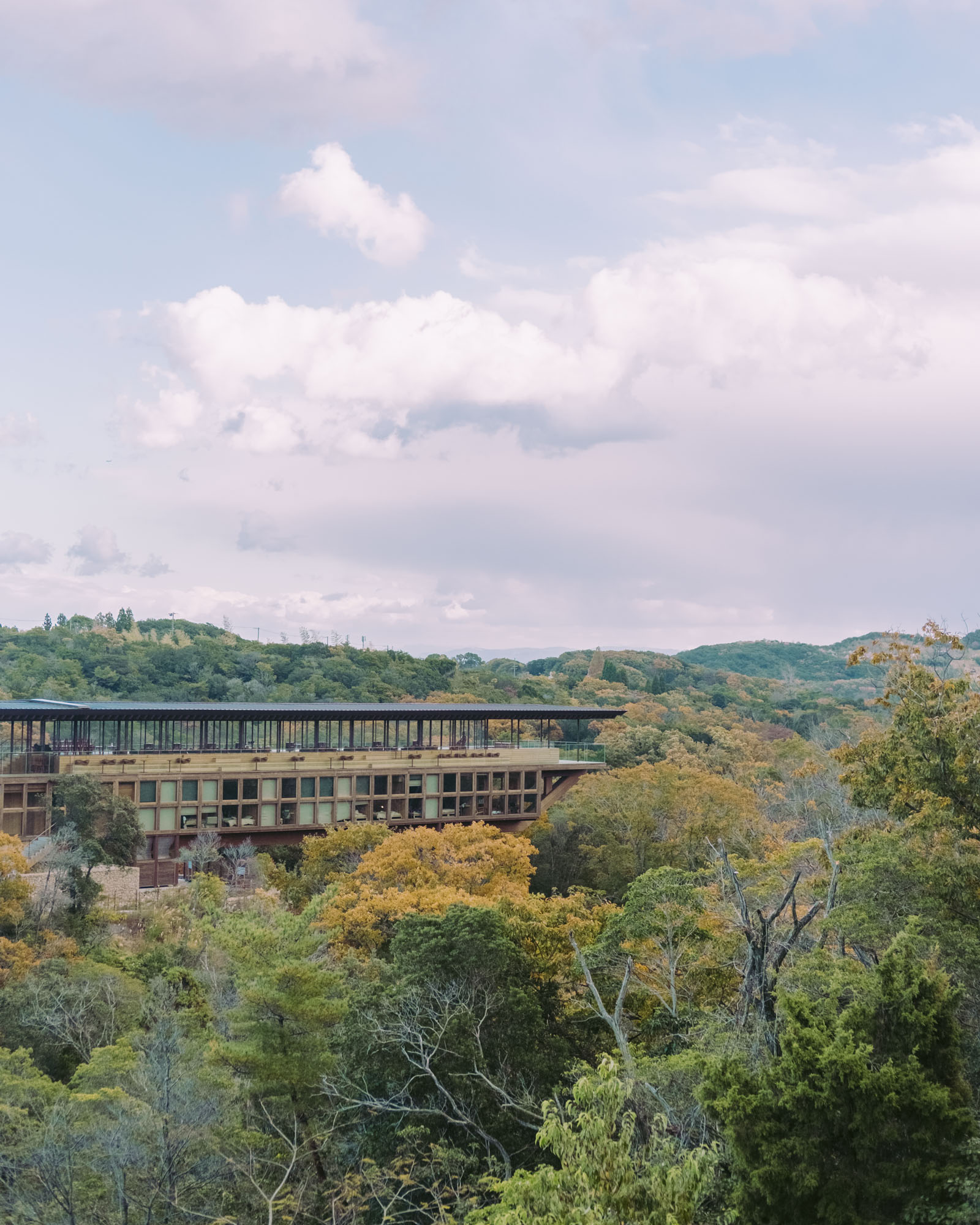
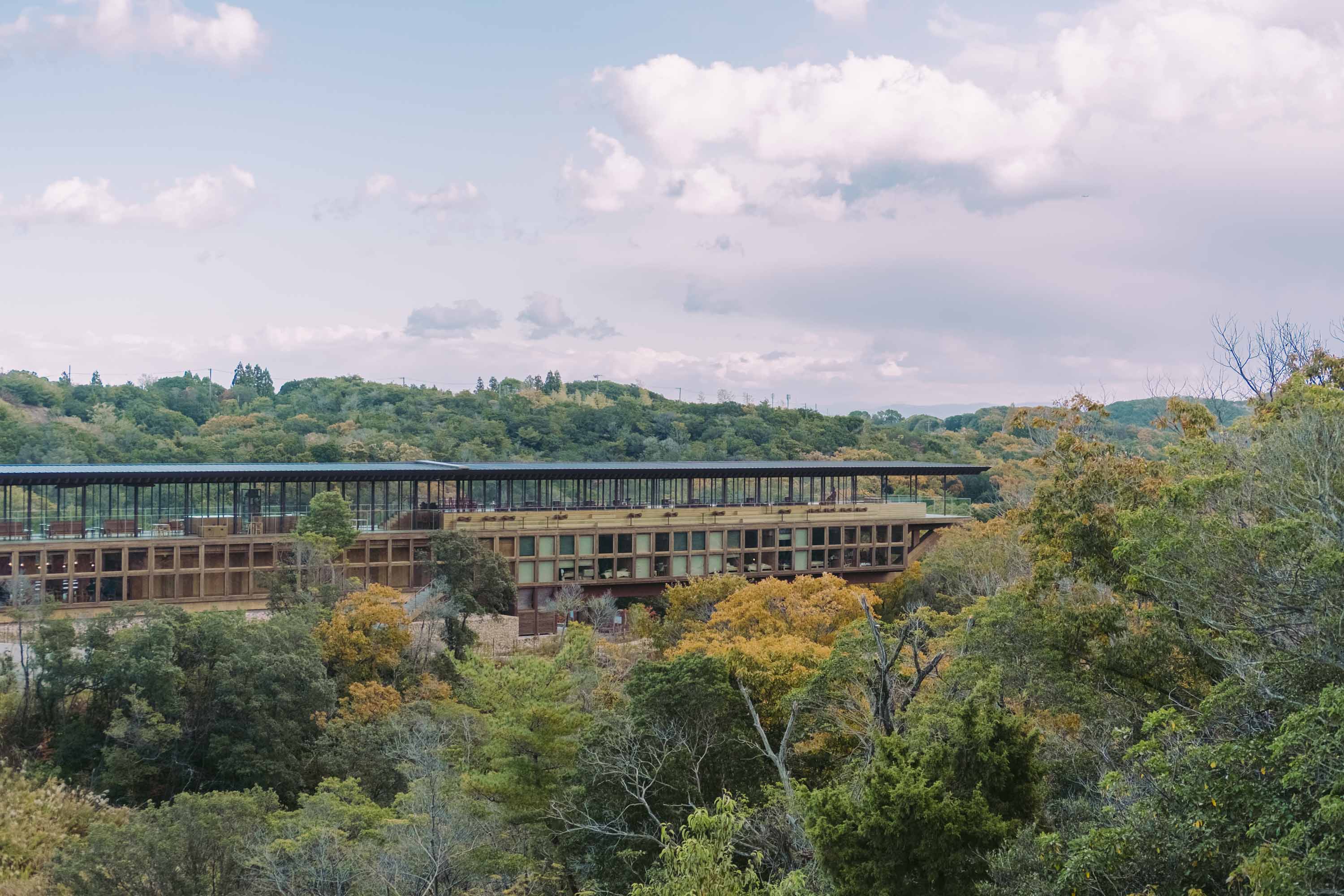
Haru San San | Shigeru Ban
︎ 2022︎ 11:00-18:00, Closed Wed
︎Google Maps
︎ Reservations
Die-hard fans of Shigeru Ban may want to visit the nearby Haru San San, a farm-to-table restaurant that opened to great fanfare in 2022. While slightly on the pricey side, the lunch course is far more accessible than a stay at Zenbo Seinei and offers a chance to admire Ban’s thatched-roof design, supported by his signature paper tube pillars.
Reservations recommended, especially when visiting on the weekend.
Lunch Course with seasonal vegetables and meat: 2,700~
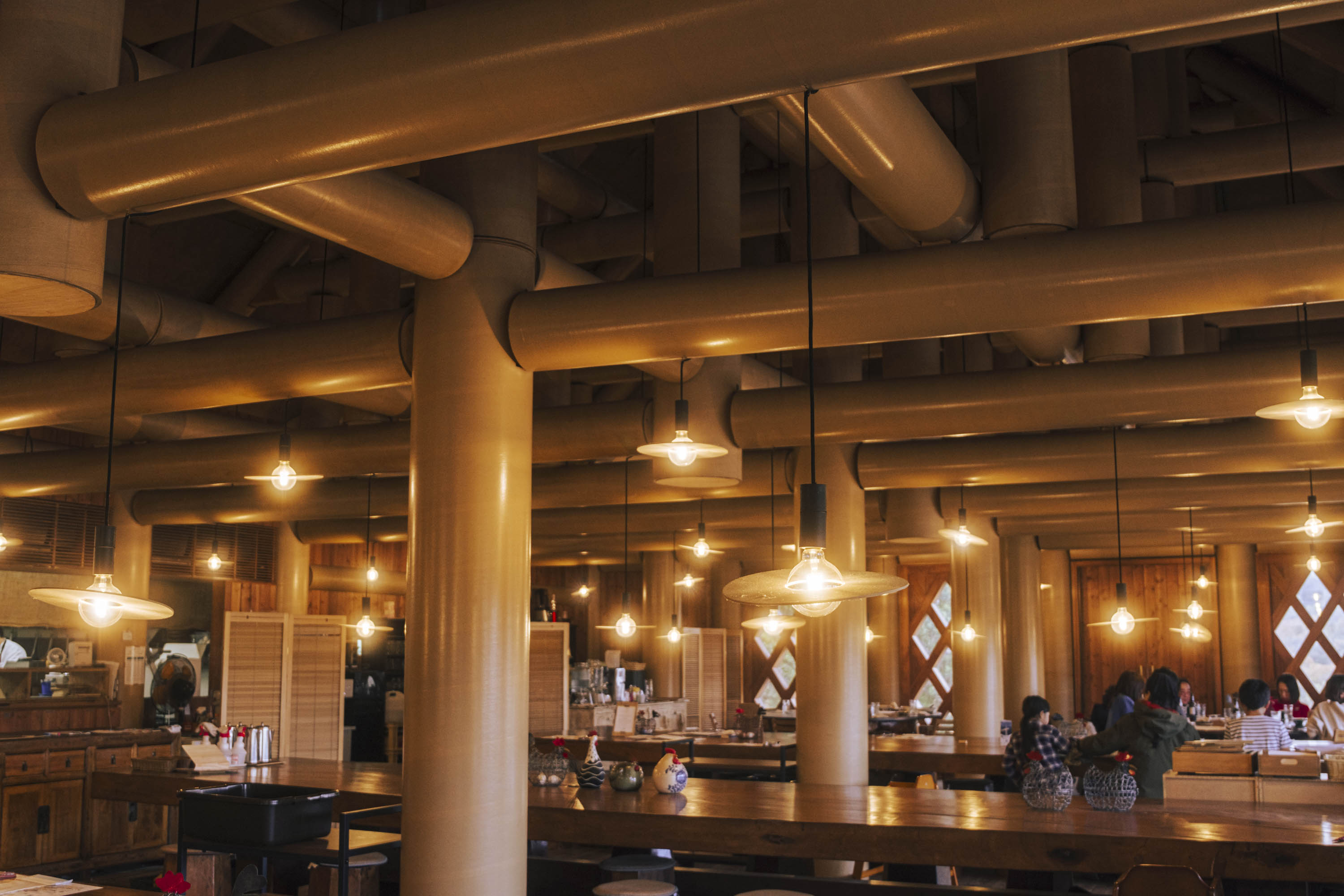

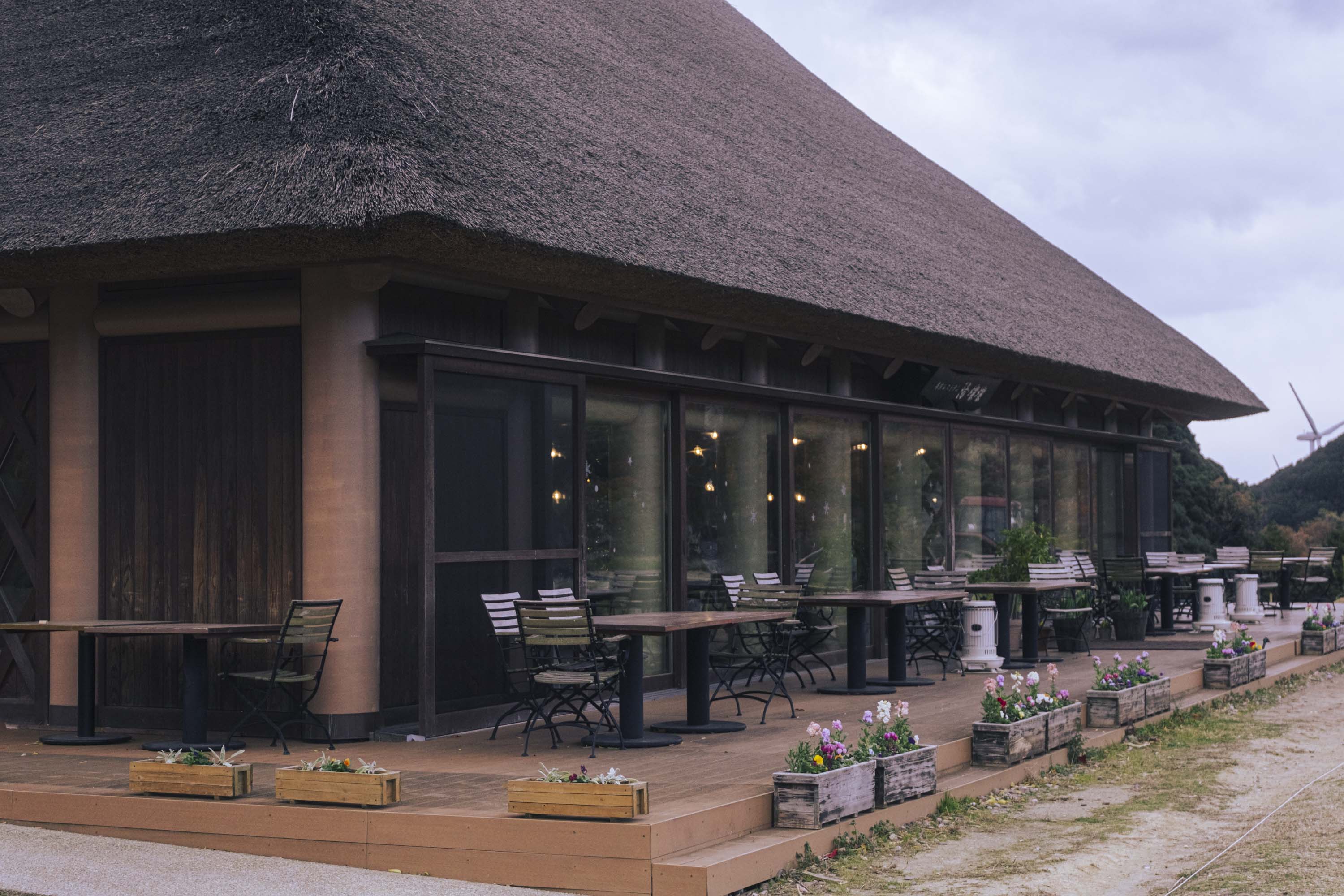
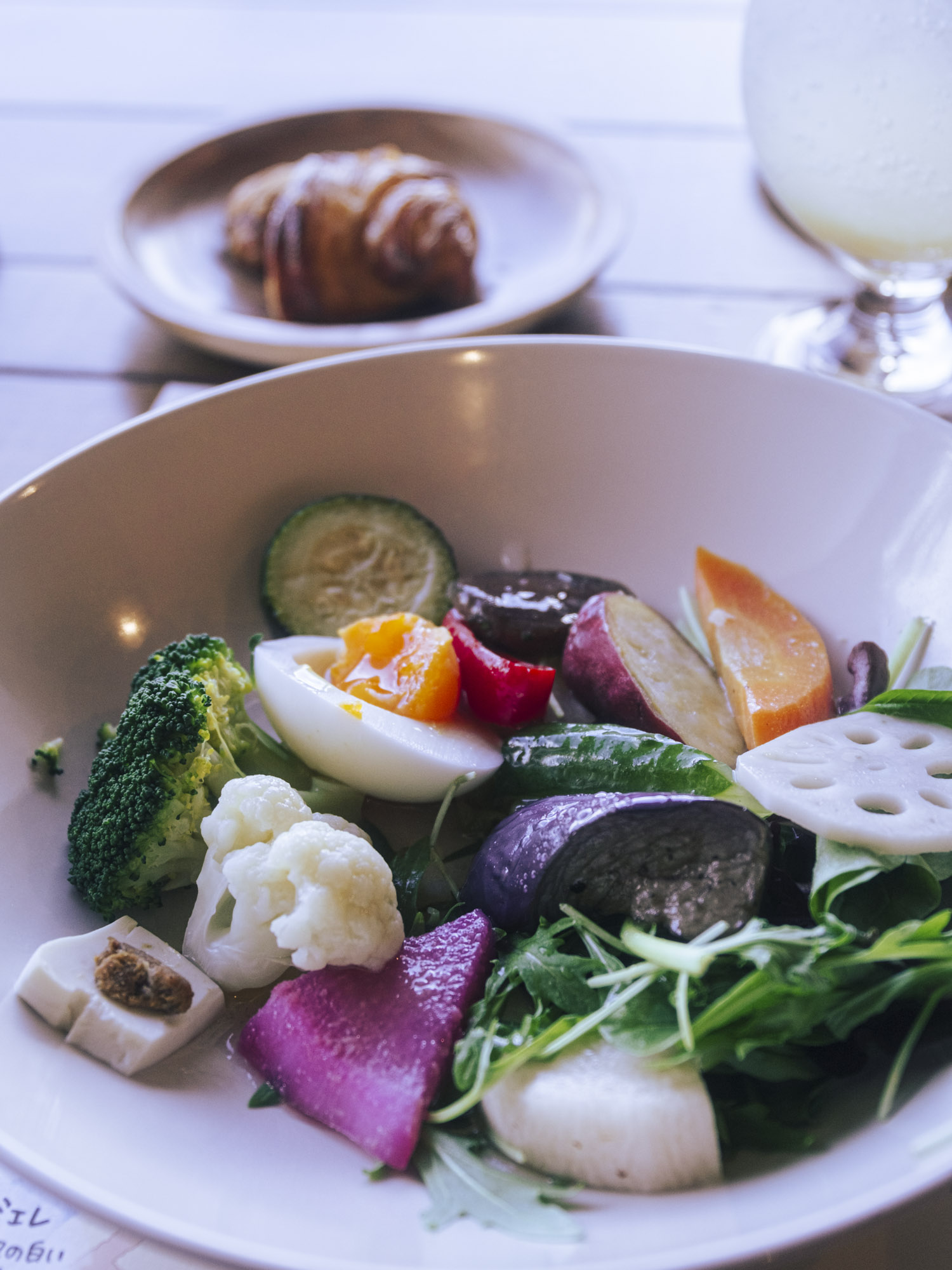

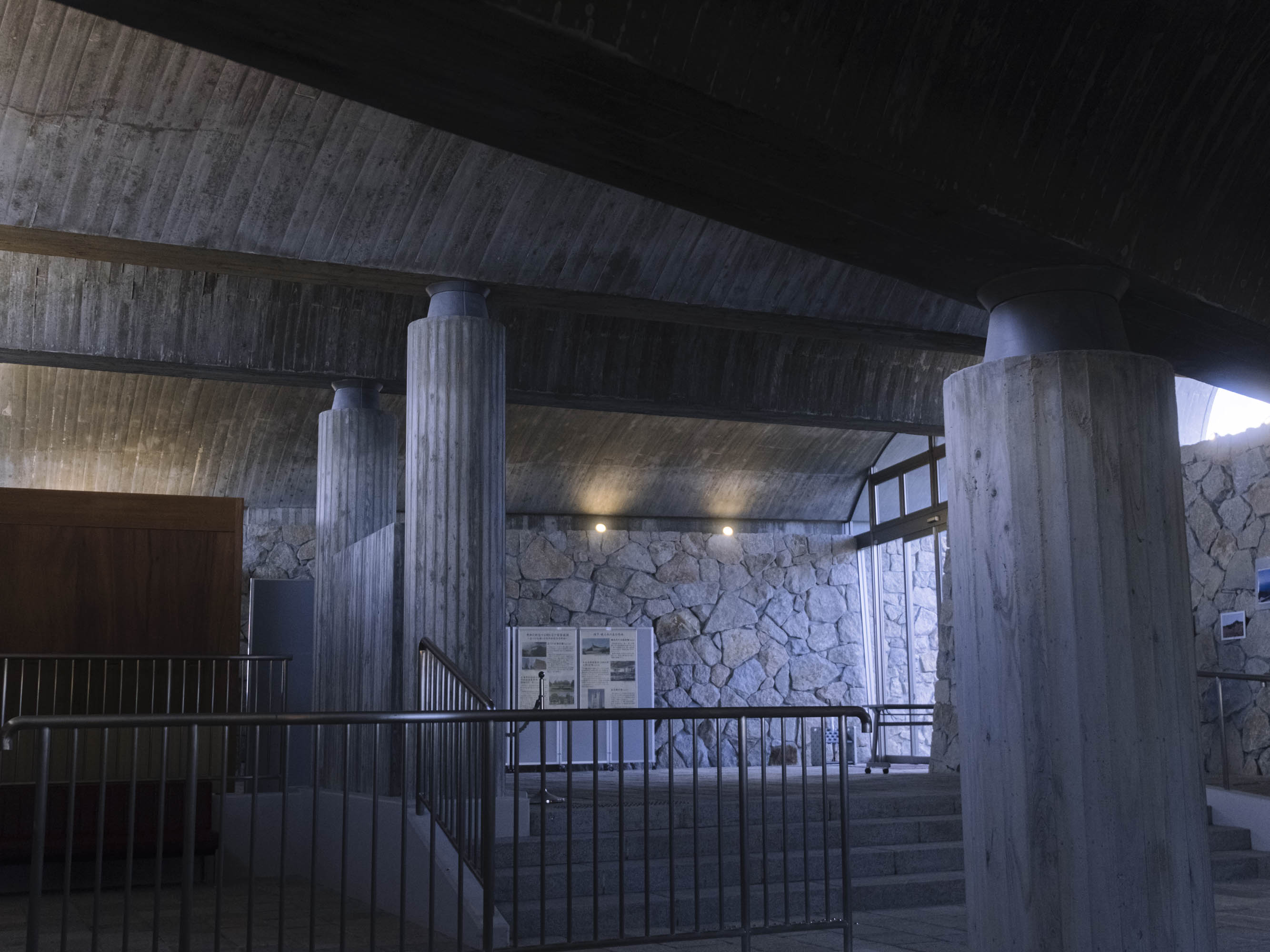
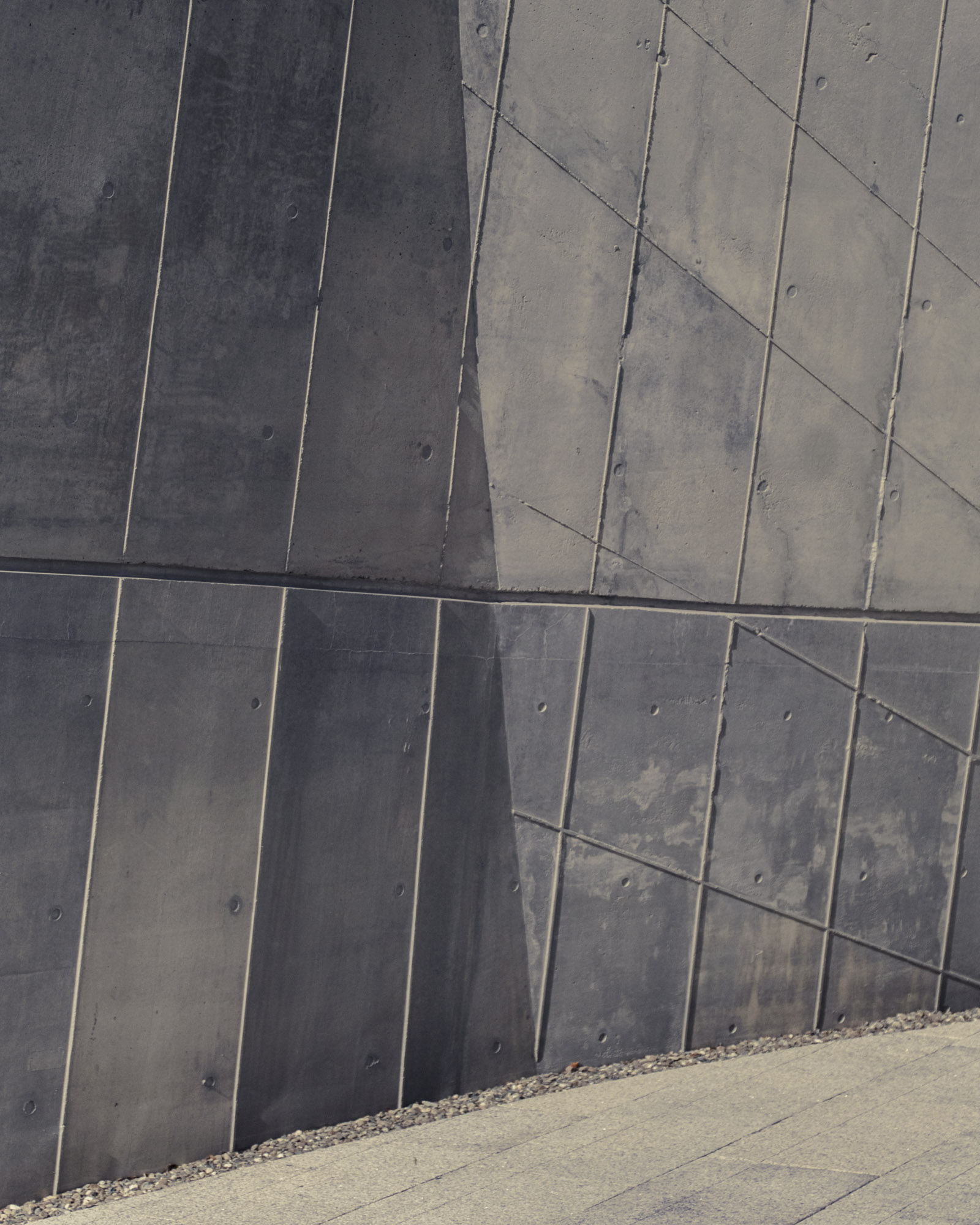
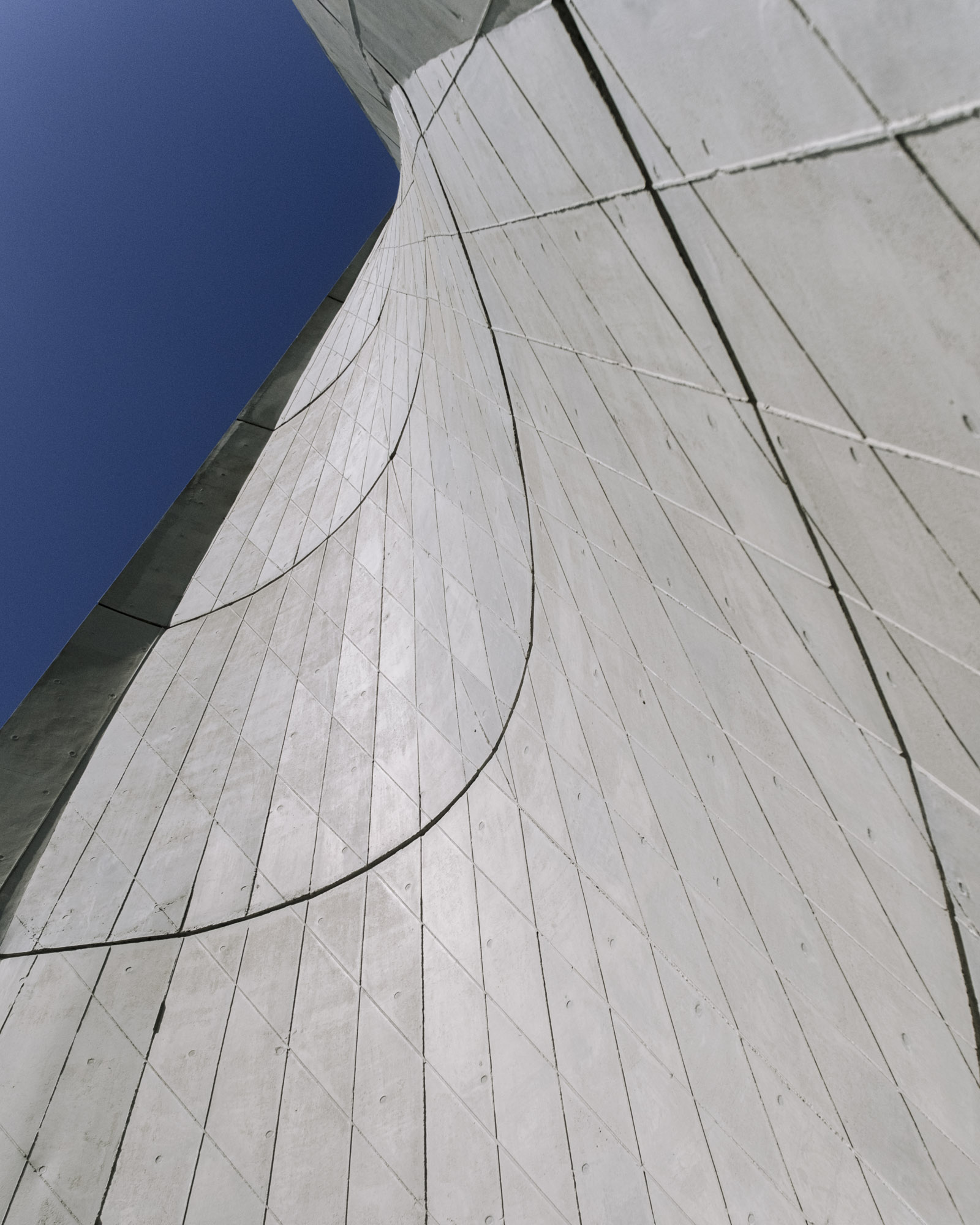
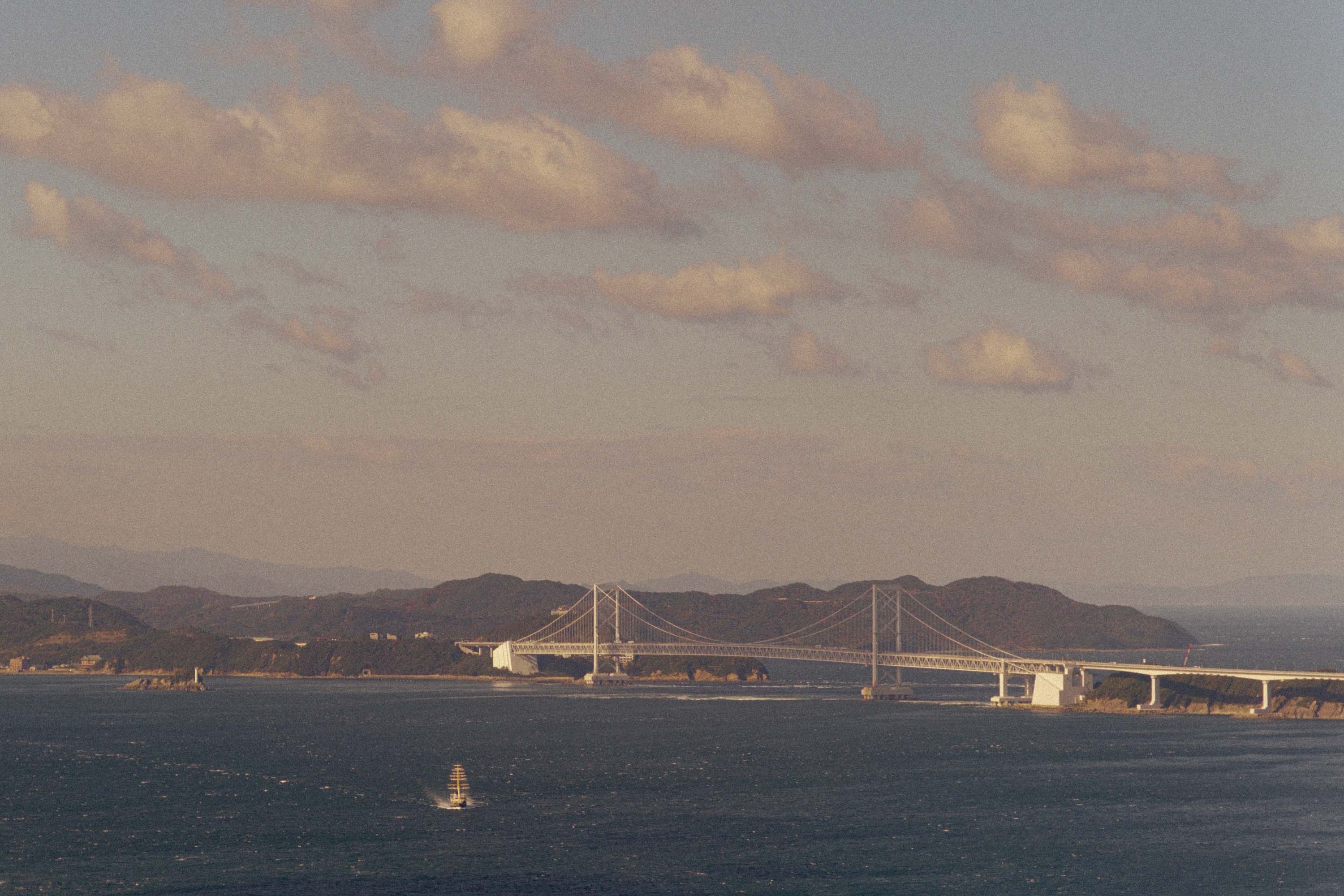
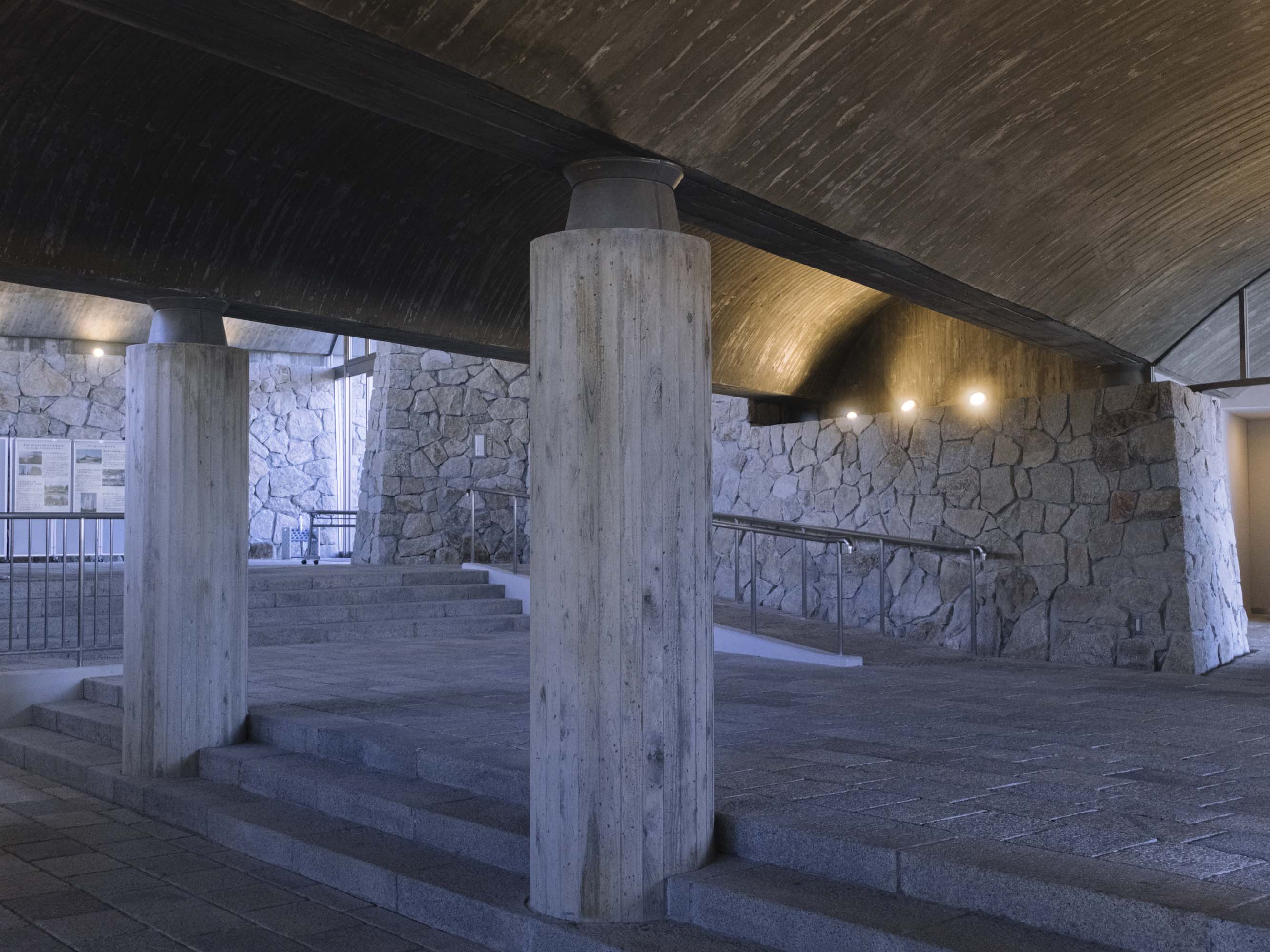
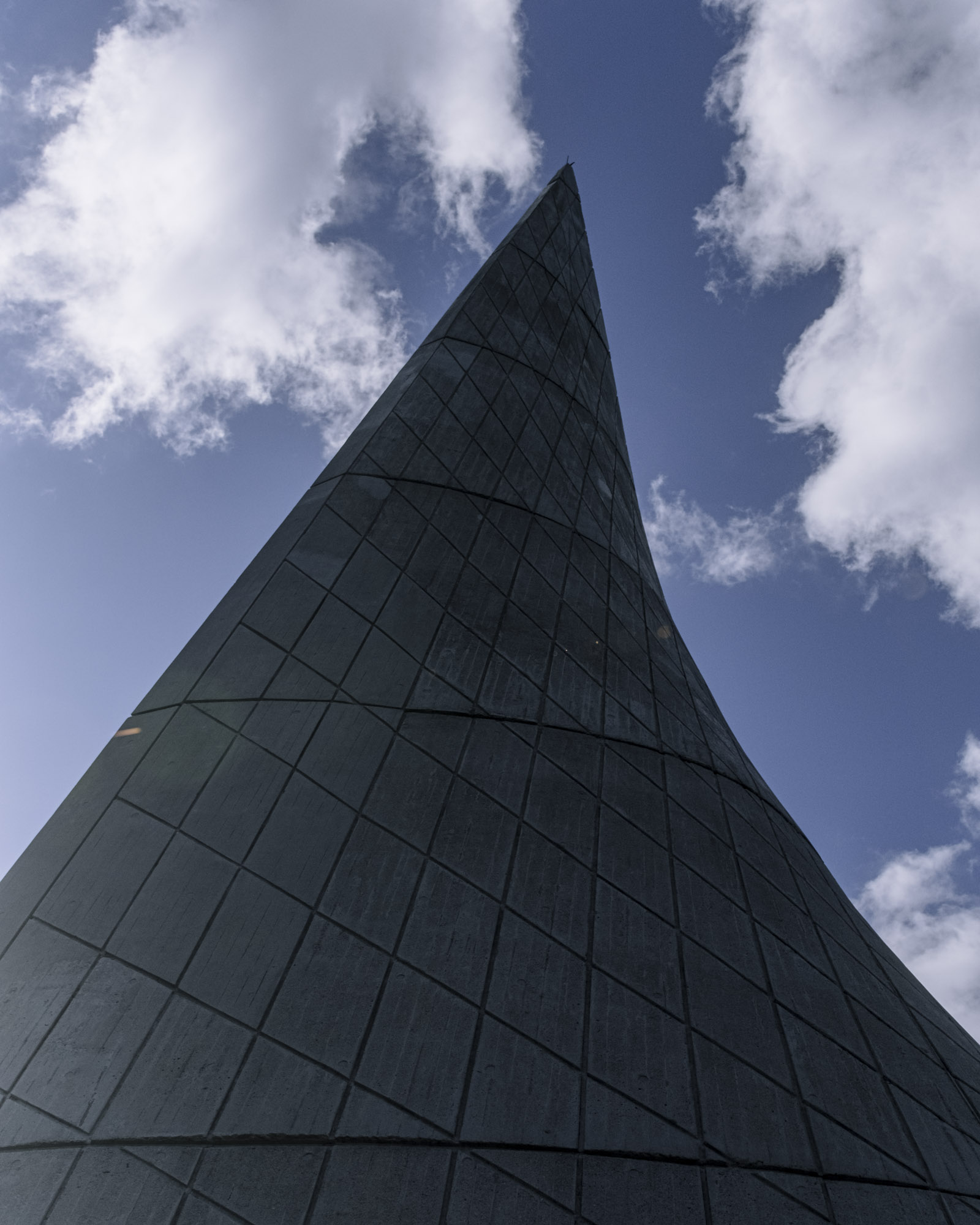
Wakoudo-no-hiroba Park | Kenzo Tange
︎ 1967︎ 09:00-17:00
︎Google Maps
On the southern ridge of Awaji, about one hour from Shigeru Ban’s buildings, take a small windy road up on an unassuming mountain until you reach Wakoudo-no-hiroba Park. The parking lot already reveals in the distance why you came so far, a small but impressive structure by one of Japan’s undefeated OGs of architecture: Kenzo Tange. Upon its completion the structure was engulfed by some controversy, with Tange refusing to attend the opening ceremony and the building never being introduced in architectural journals at his request. Due to this, it is now known as one of Tange’s "forgotten works."
Built to honor student workers mobilized to military factories during World War II, many of whom perished in air raids, the memorial was commissioned by a politically charged organization chaired by then-Prime Minister Nobusuke Kishi. Upon learning the organization’s background just before completion, Tange distanced himself, skipping the inauguration and avoiding publicity. After years of abandonment and after being damaged by a large earthquake, the site was eventually redeveloped, with exhibition materials donated to the Ritsumeikan University International Peace Museum. Today, Tange’s forgotten structure has been reopened as a peace memorial, inviting visitors to reflect on history and the pursuit of lasting peace.
Ottomanegi Onion
︎ 2016︎ 09:00-17:00, Closed Tue
︎Google Maps
While not a classic architectural site, southern Awaji offers a quirky attraction that perfectly embodies the island’s obsession with its famous onions. Known for producing some of Japan’s finest and most flavorful onions, Awaji celebrates this local specialty with a larger-than-life tribute: a giant onion statue standing 2.5 meters tall, 2.8 meters in diameter, and weighing 200 kilograms. Because in Japan, even onions deserve a monumental homage!
Located behind the visitor center — where you can enjoy delicious onion soup and browse for souvenirs — the statue also offers stunning sunset views over the Seto Inland Sea, making it a fun and scenic stop to conclude your architecture tour.
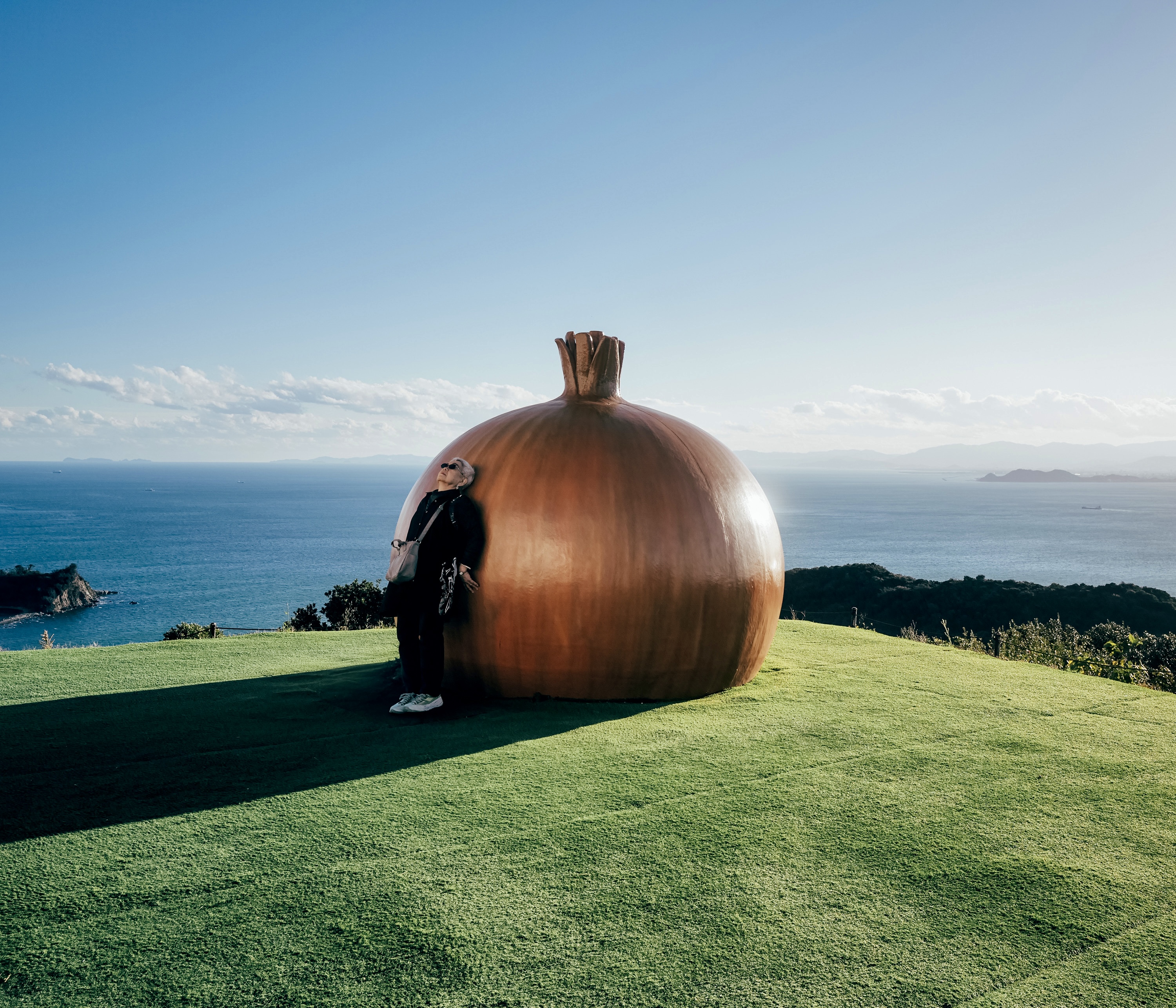
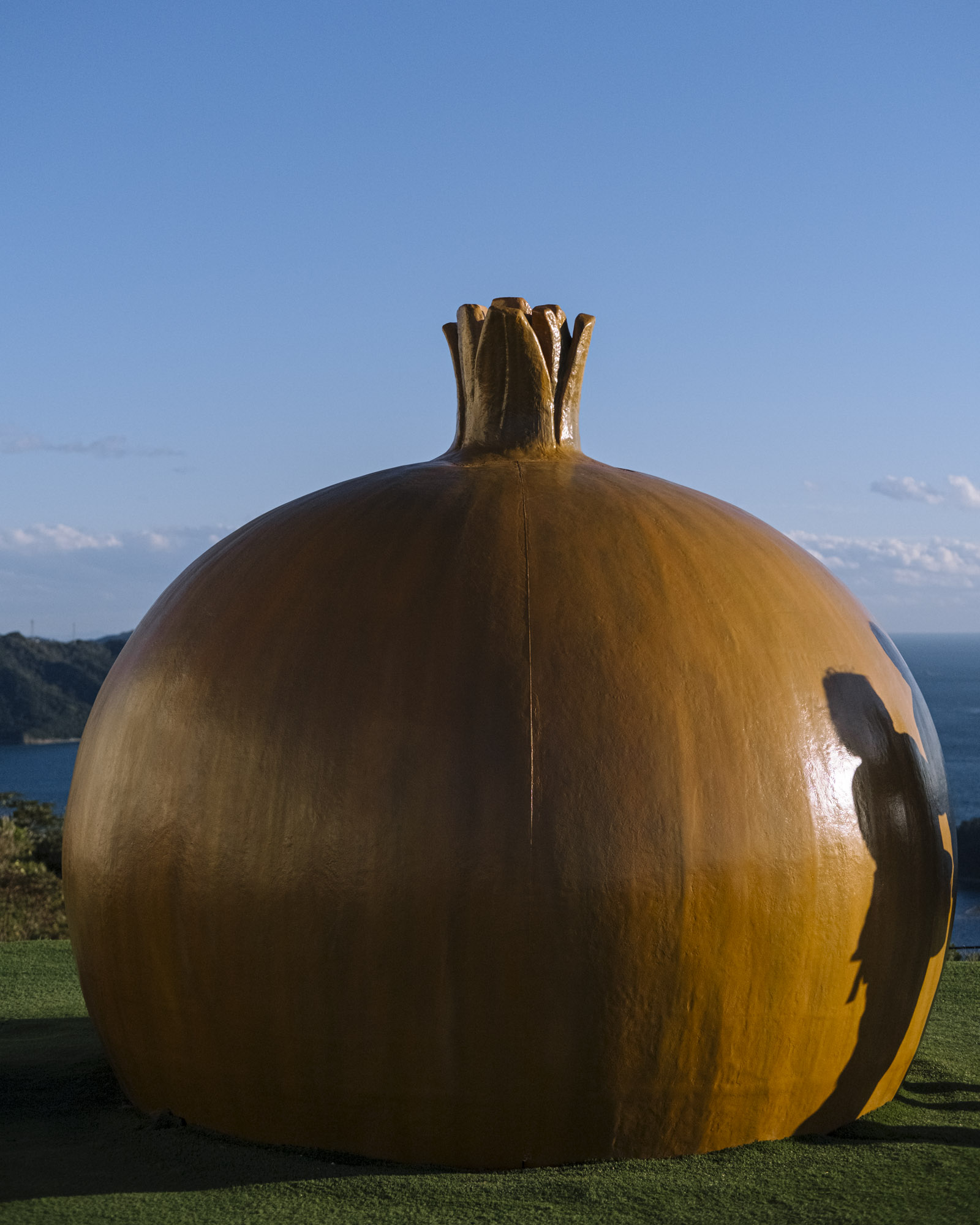
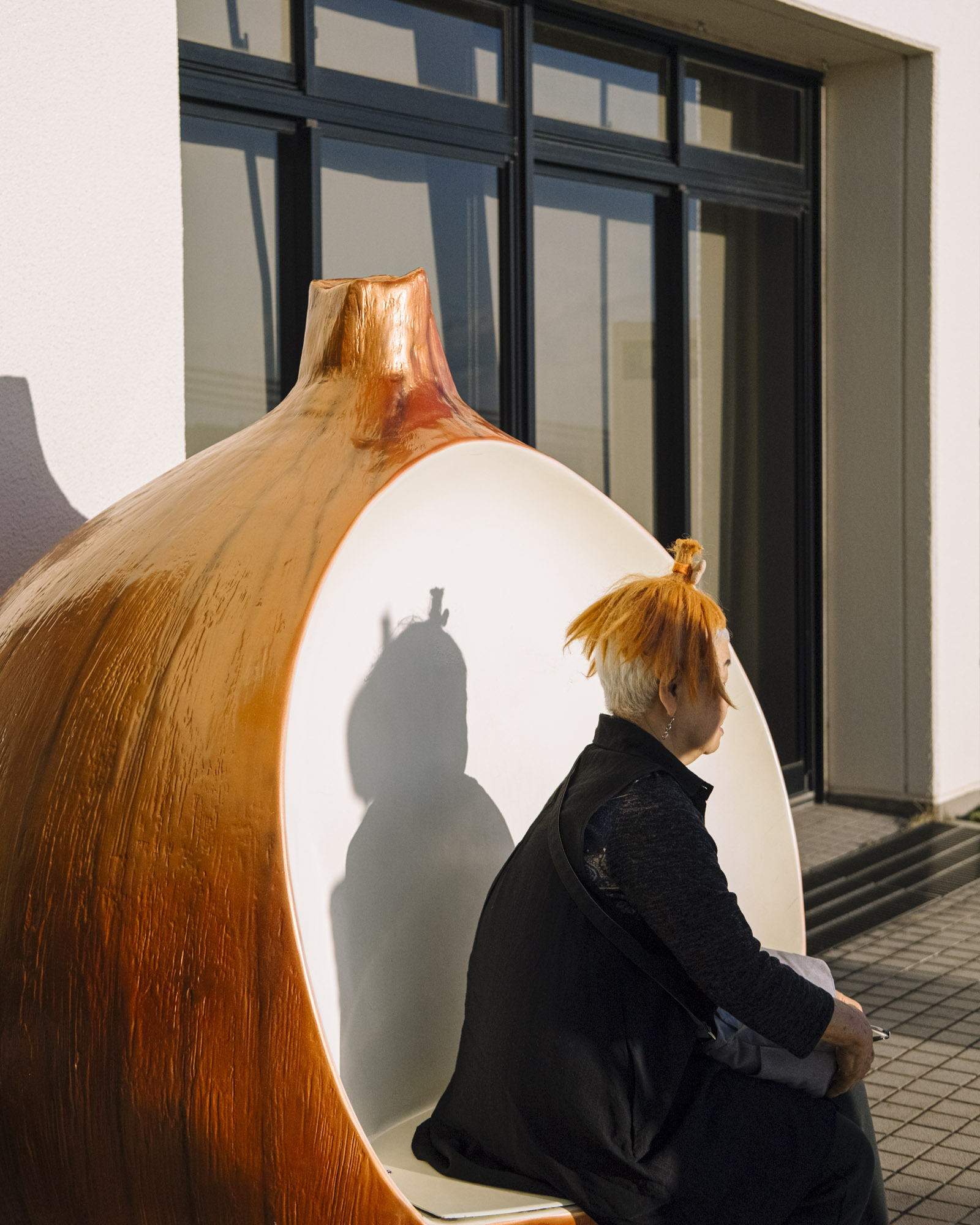


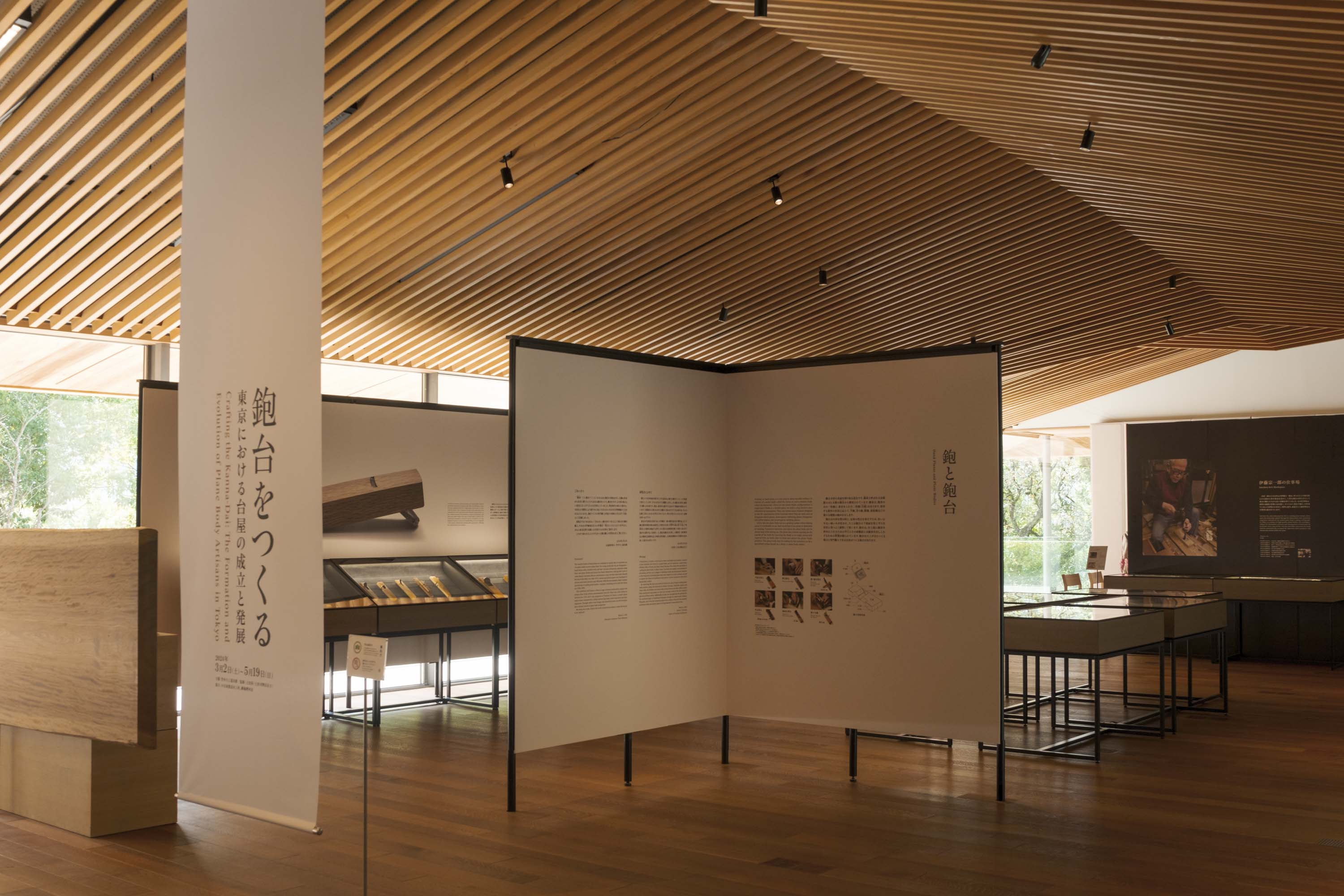
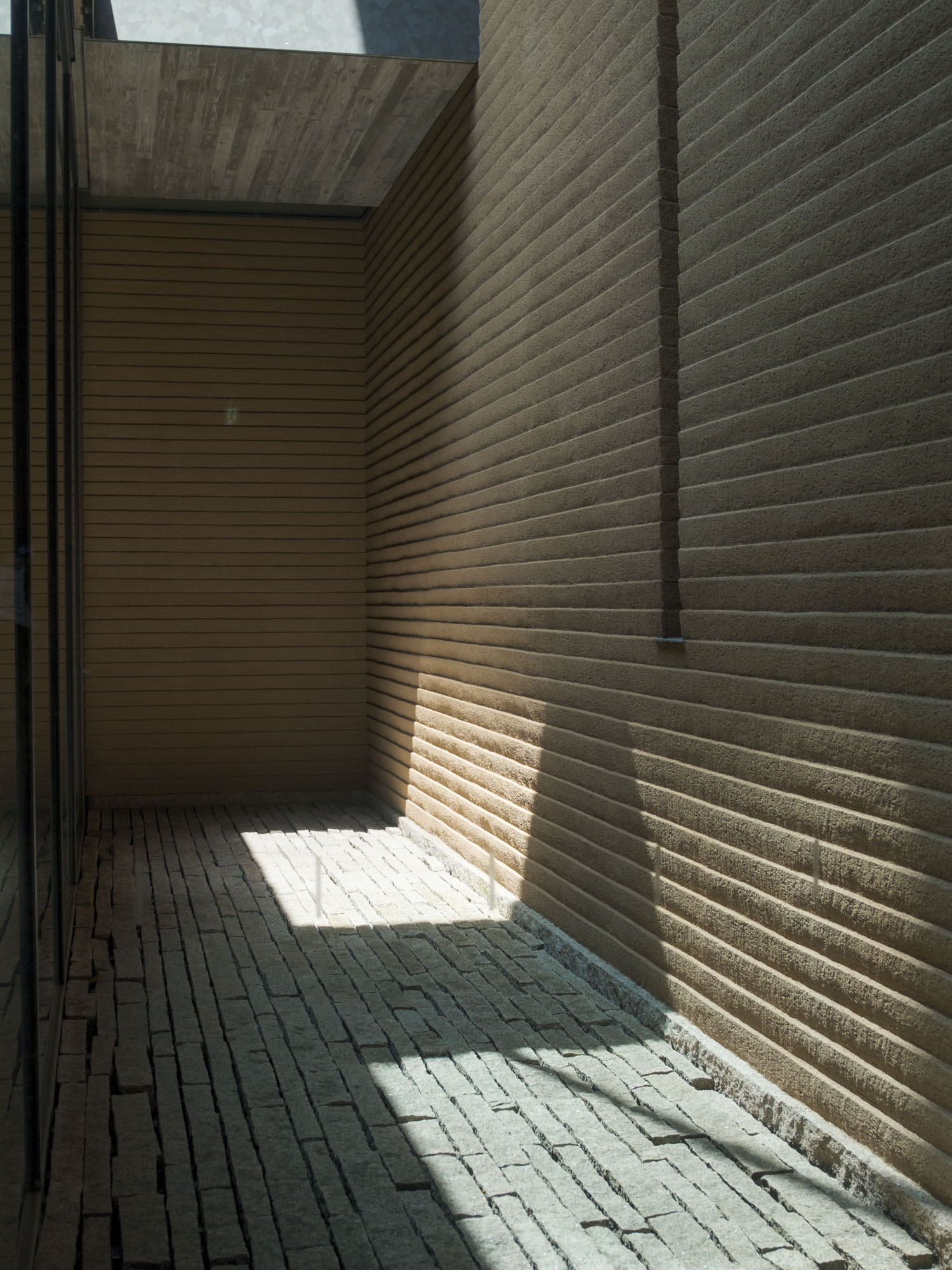
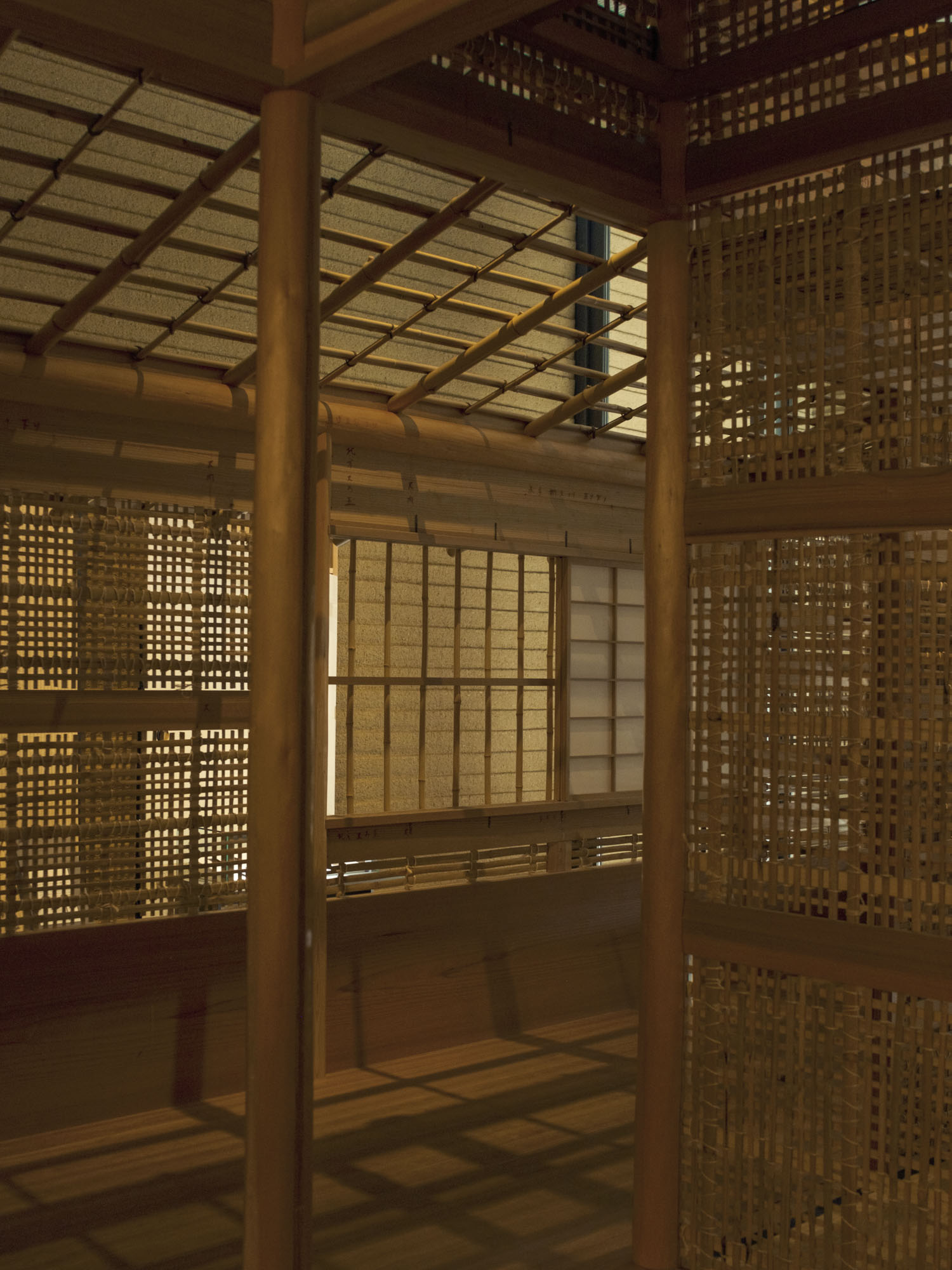
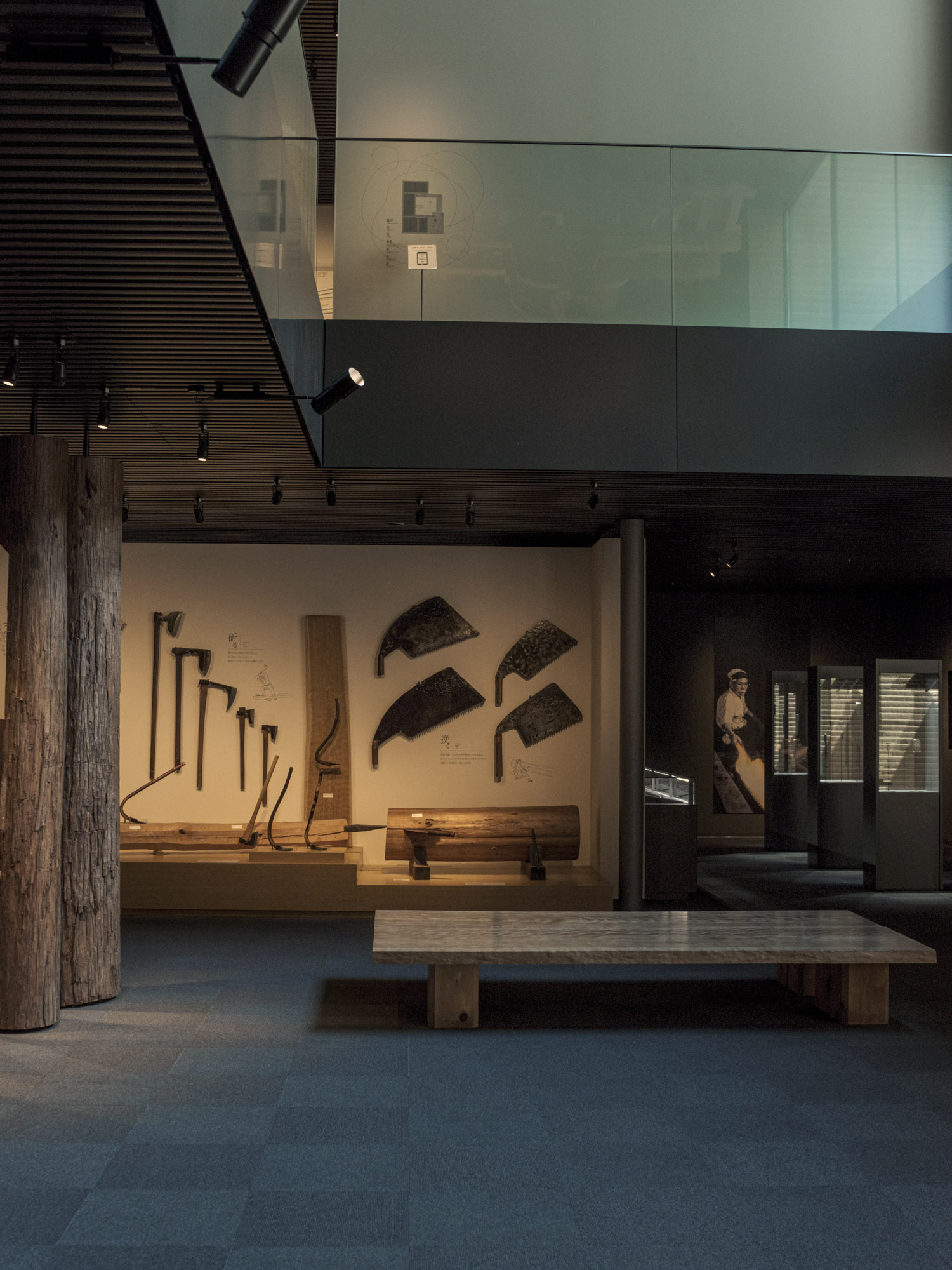
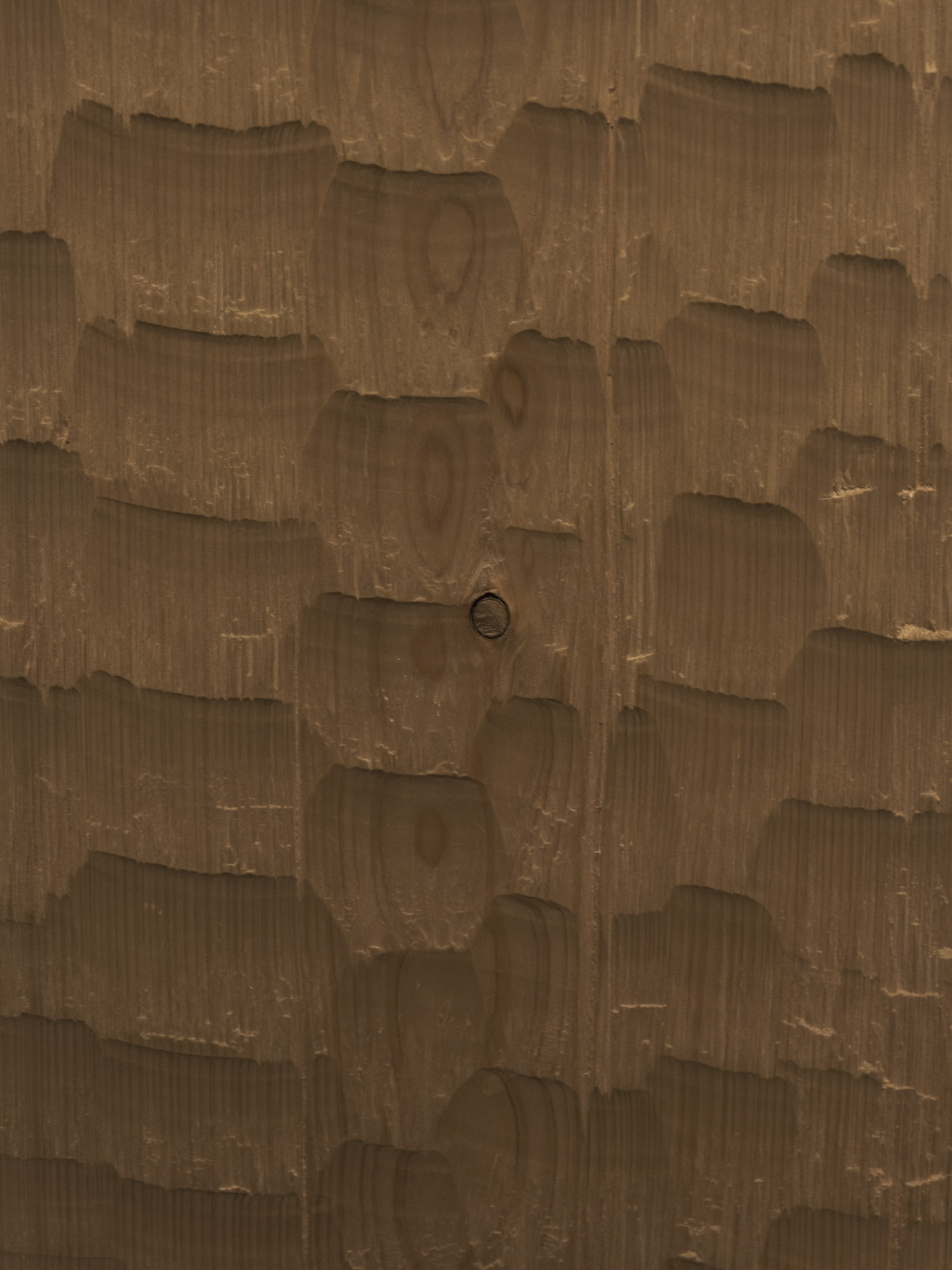
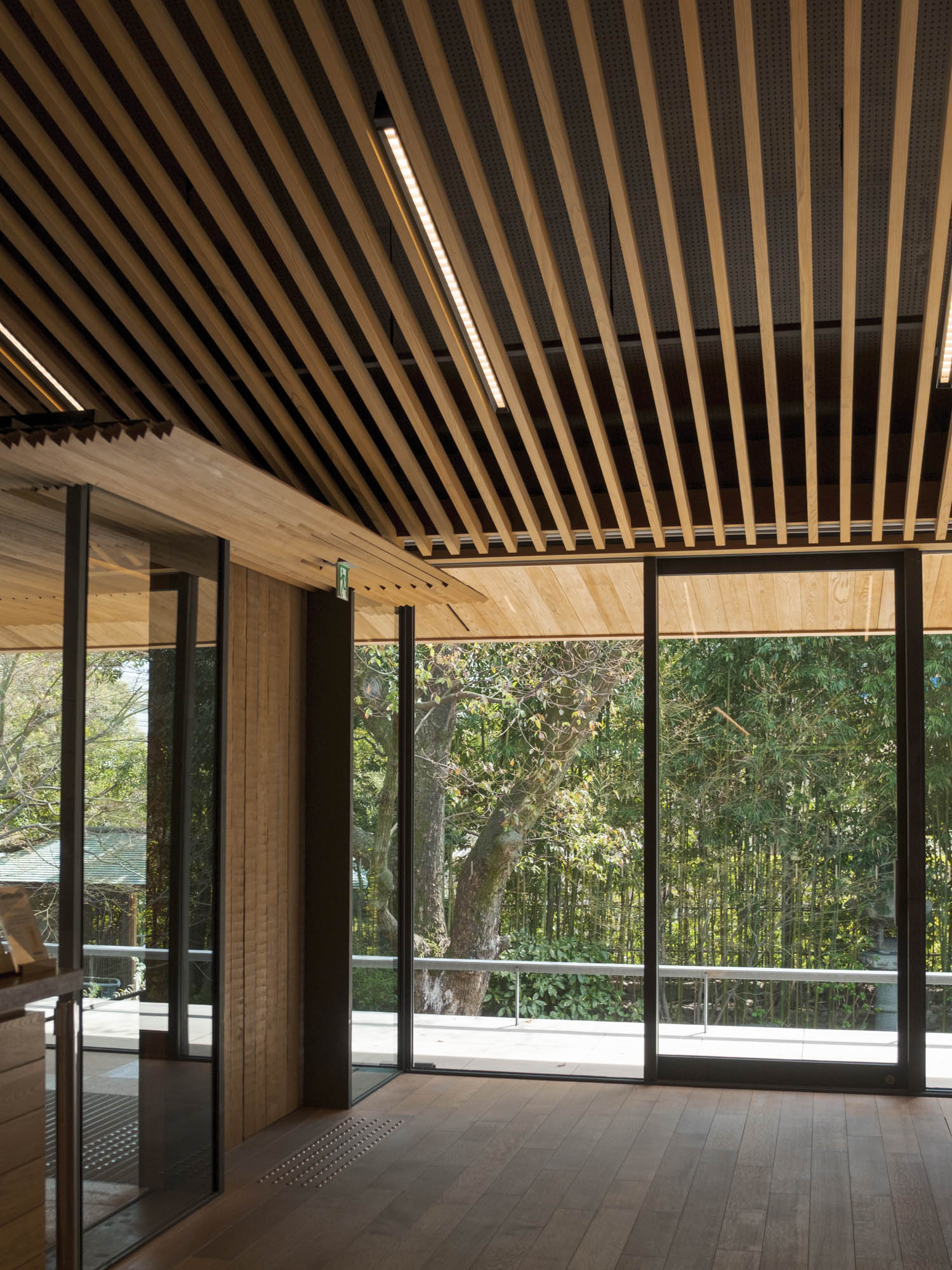

If you’re passing through Kobe on your way to Awaji, consider adding these two spots near Shin-Kobe’s Shinkansen station to your itinerary for a worthwhile detour.
Takenaka Carpentry Tools Museum
︎ 2014︎ Sat, Sun, Tue, Wed: 09:30-16:30
︎Google Maps
Just a couple minutes walk from Shin-Kobe Station, the beautifully desigend Takenaka Carpentry Tools Museum is Japan’s only museum dedicated to — you guessed it — carpentry tools. Celebrating the skills and spirit of the craftspeople behind the country’s wooden architecture, the museum features around 1,000 tools, a full-scale model of Toshodaiji Temple's Golden Hall framework, and a structural model of a tea ceremony room. Housed in a modern yet traditionally inspired wooden structure, the museum was designed, built and is operated by Takenaka, one of Japan’s oldest and largest construction companies.
Ninomiya Ichiba Market
︎ 1960︎ 09:00-18:00, Closed Sun
︎Google Maps
Located about a 15-minute walk from Shin-Kobe Station, Ninomiya Ichiba is one of the area’s most atmospheric and old-school shotengai (market streets), beloved by locals since its establishment in the Taisho era. Known as the community’s “kitchen,” the market offers a wide selection of fresh goods at affordable prices, attracting both local shoppers and restaurant owners.
While its economic heyday may have passed, the market retains a gritty charm that makes it a fascinating space to explore. For a truly unique experience, visit before or after hours (especially on a Sunday) to capture Japan’s retro aesthetic at its most cinematic.
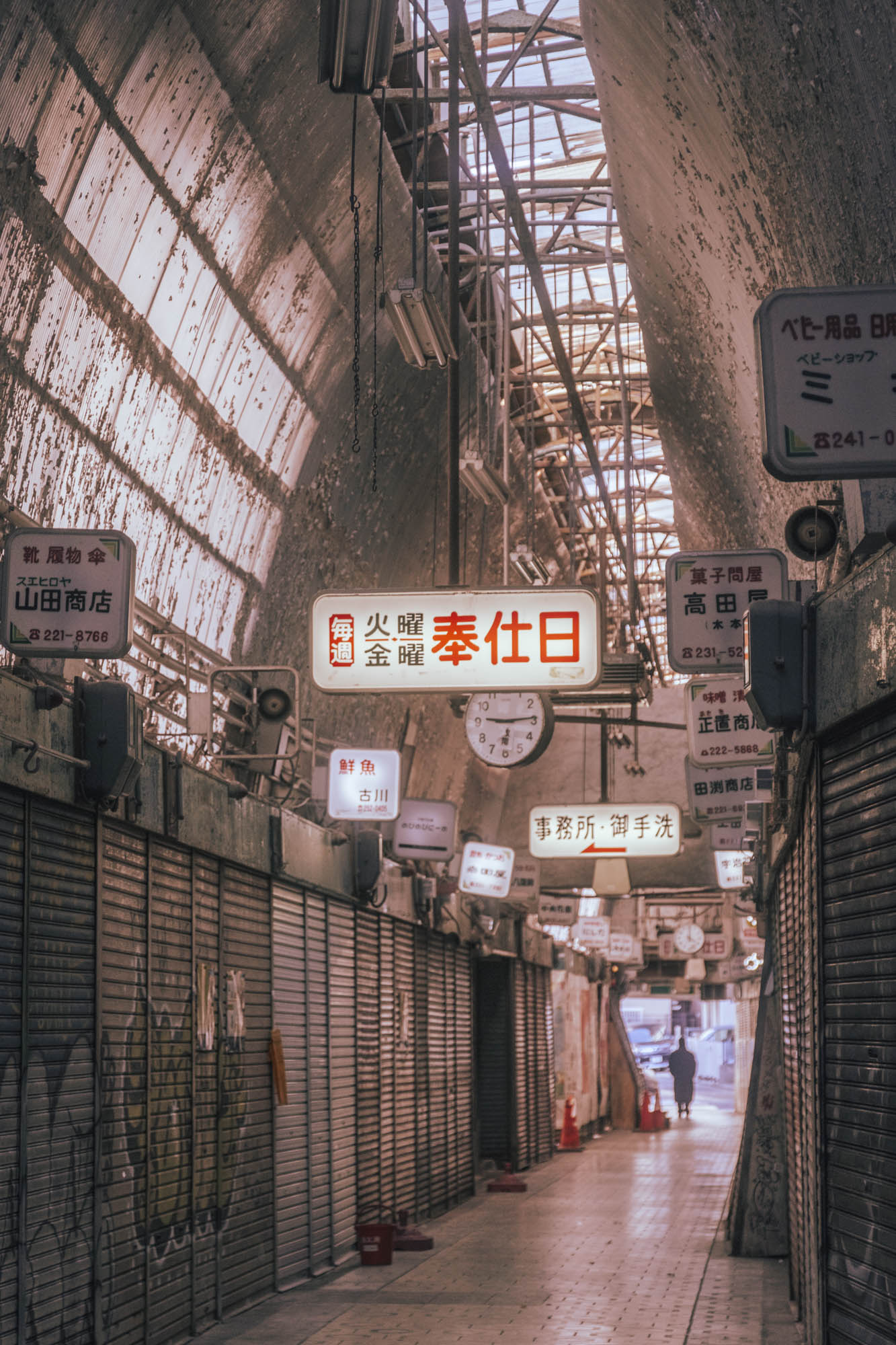
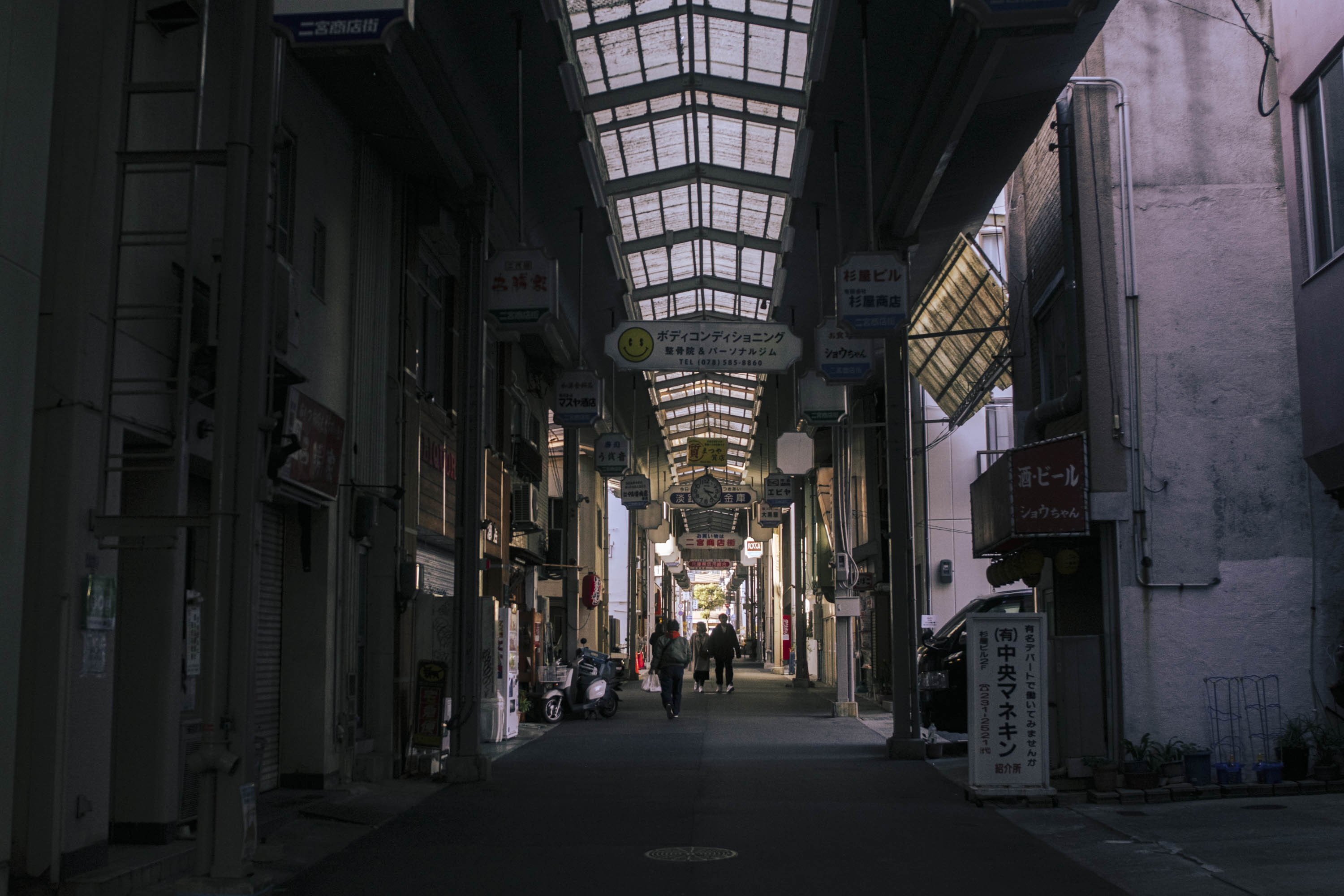
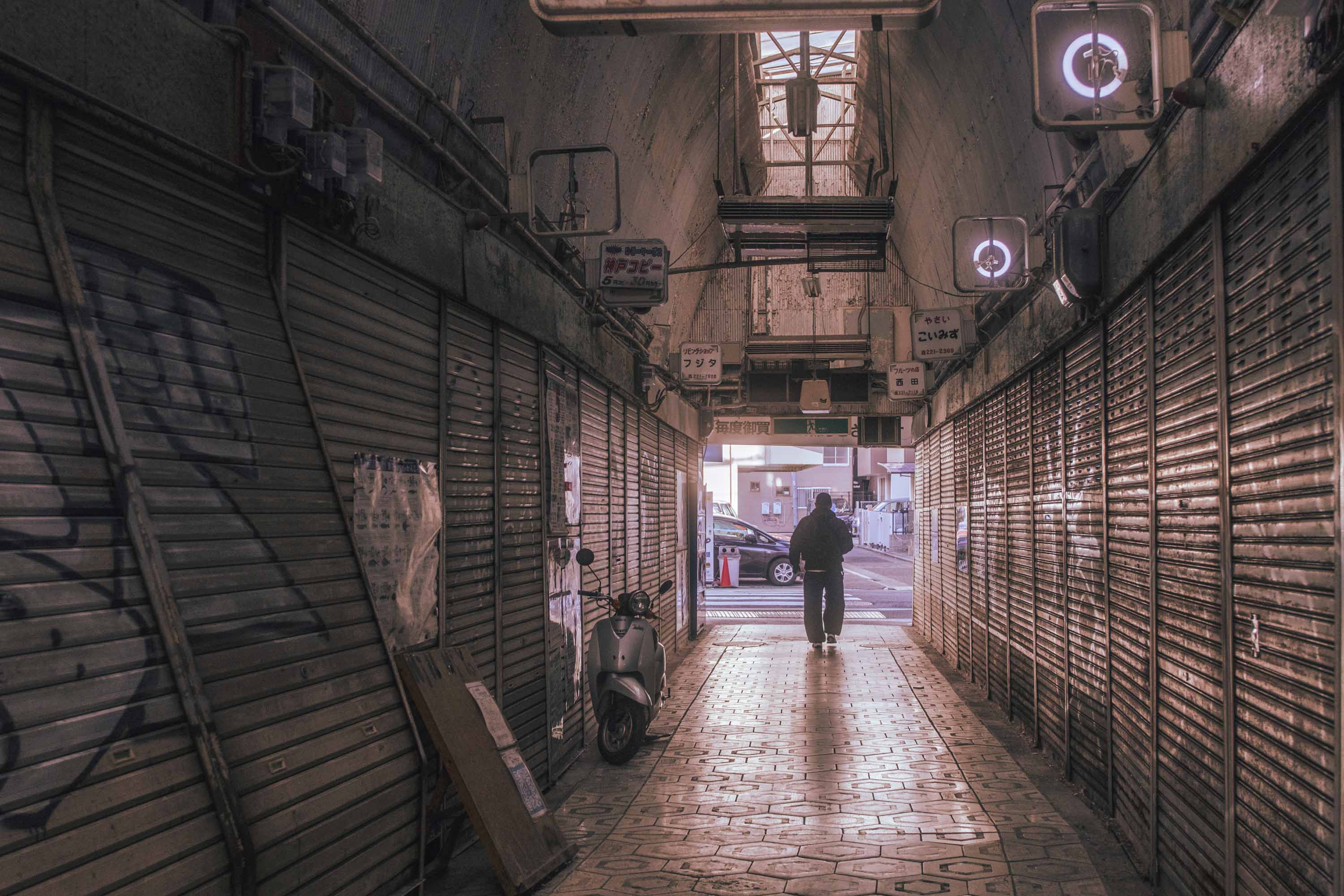

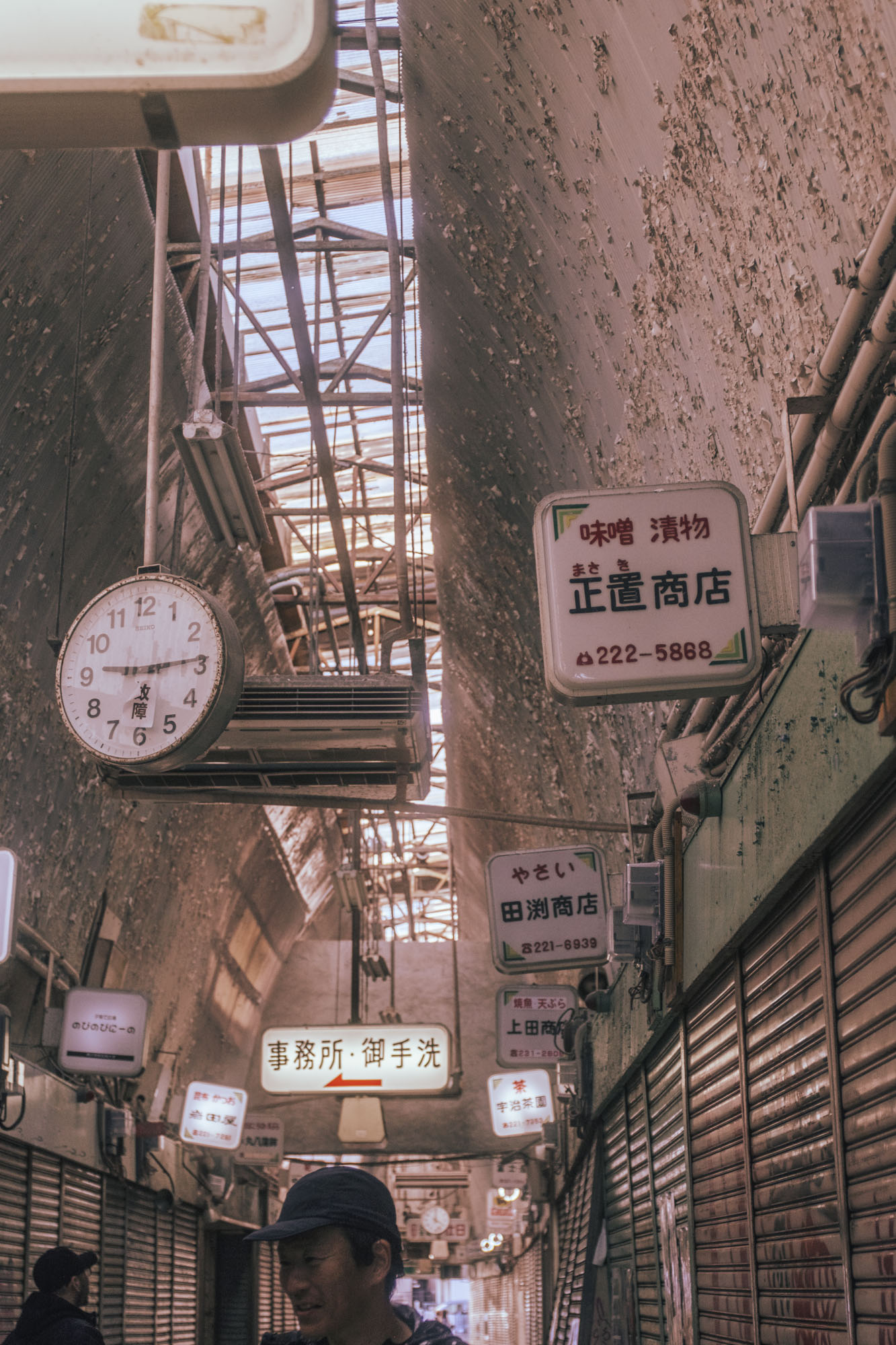
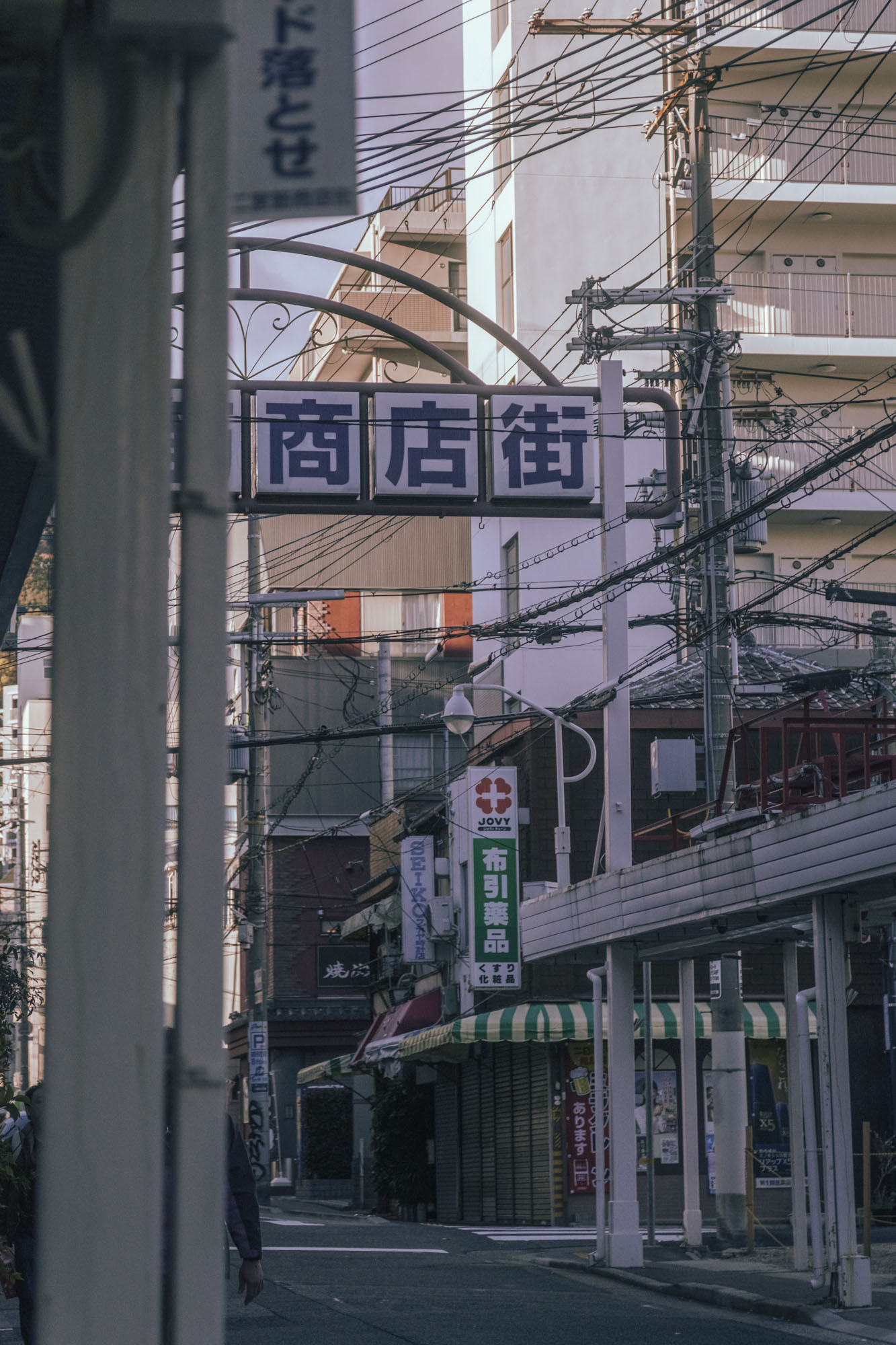
Explore more
